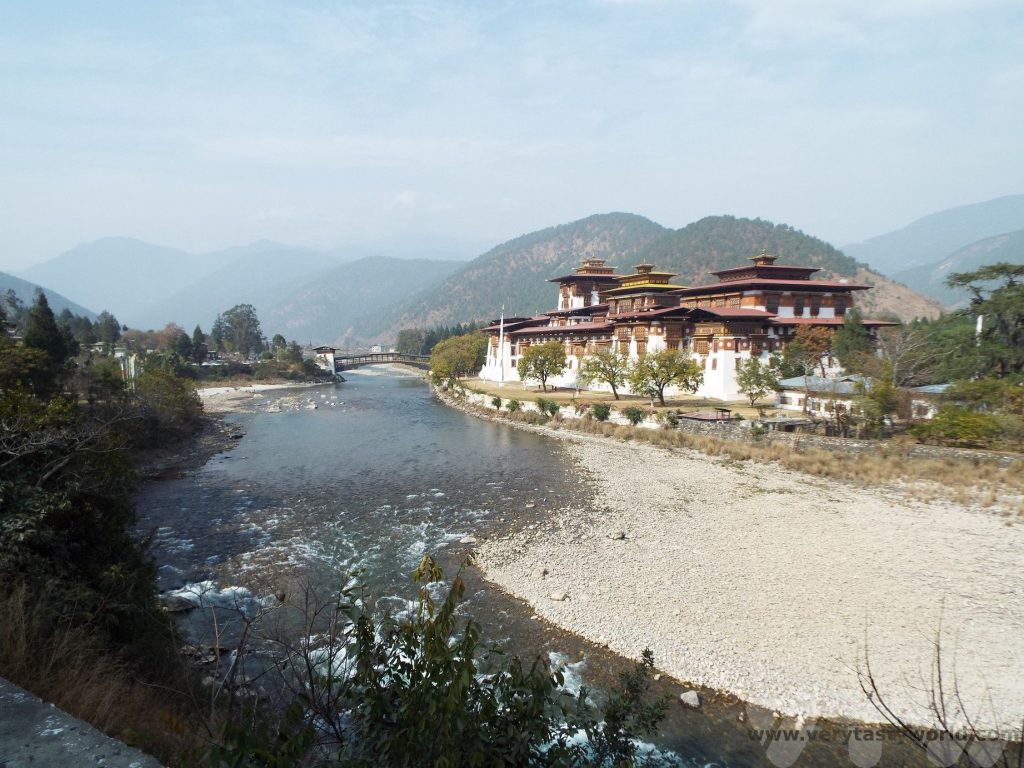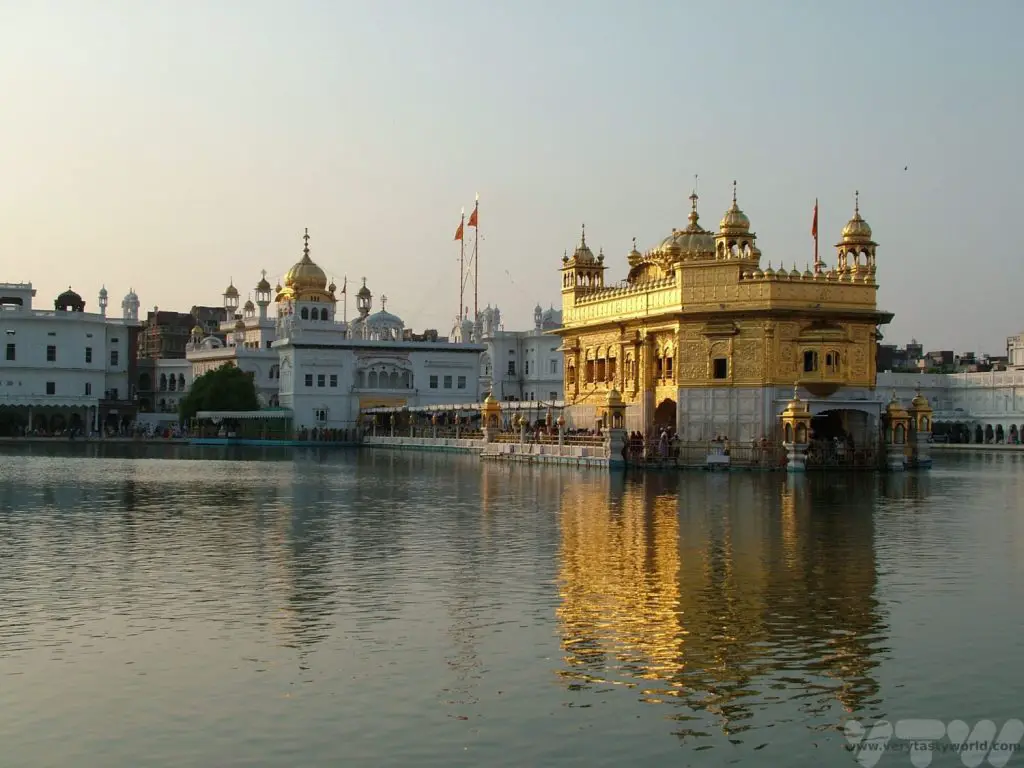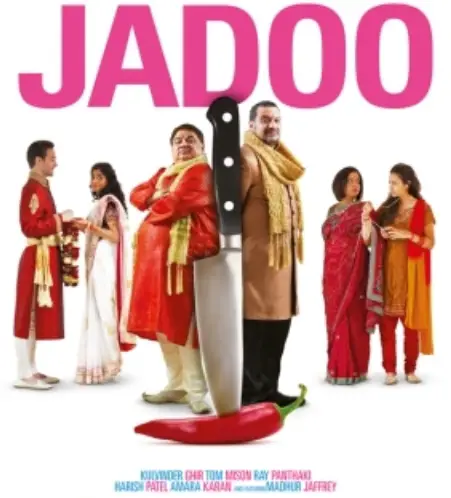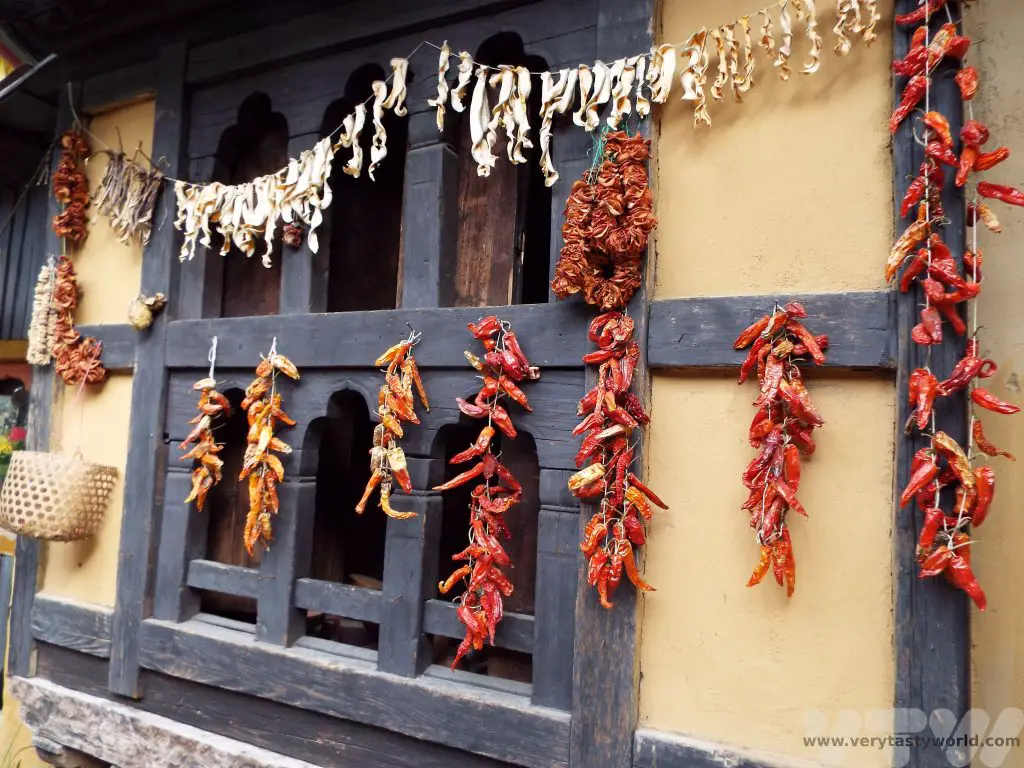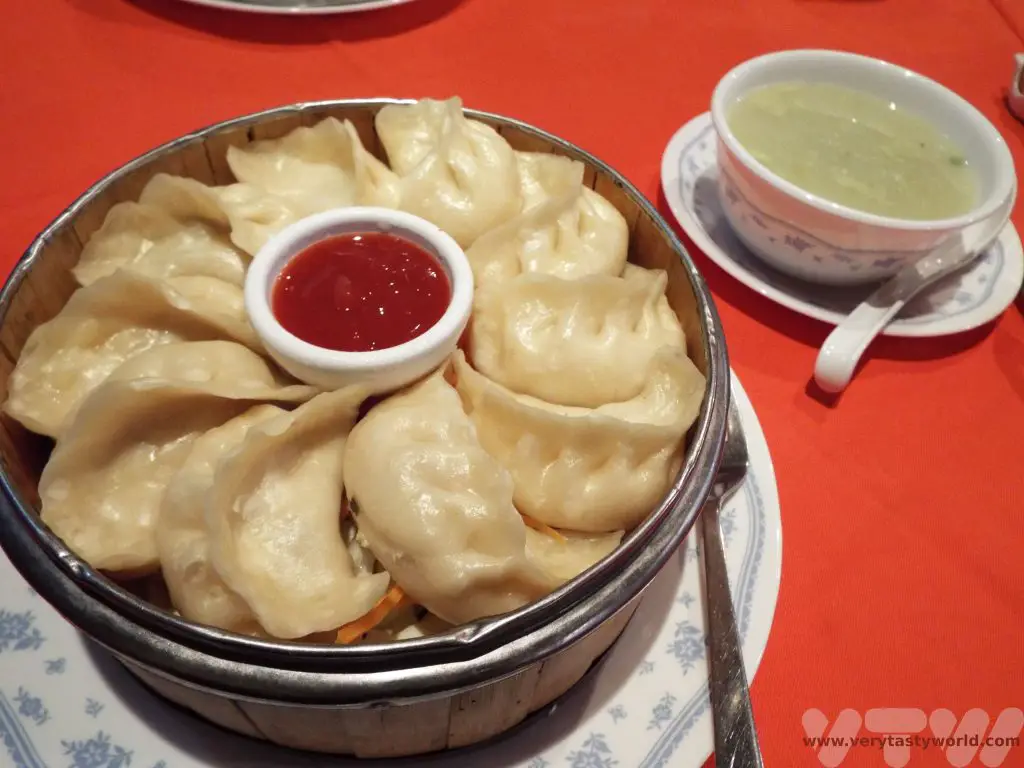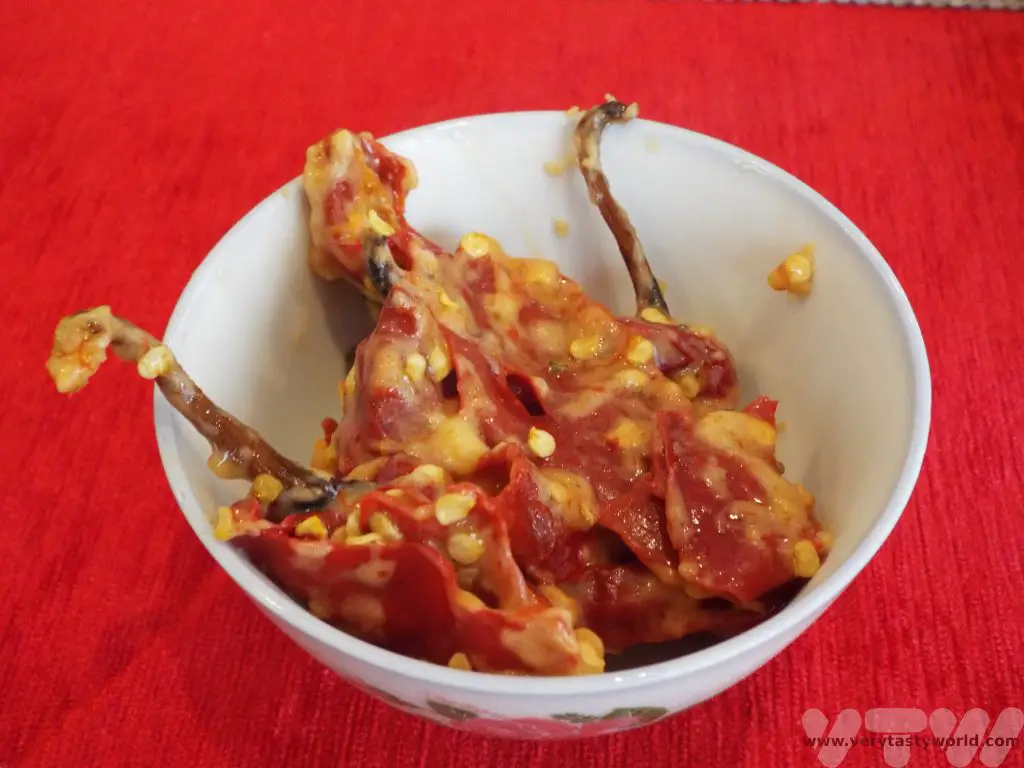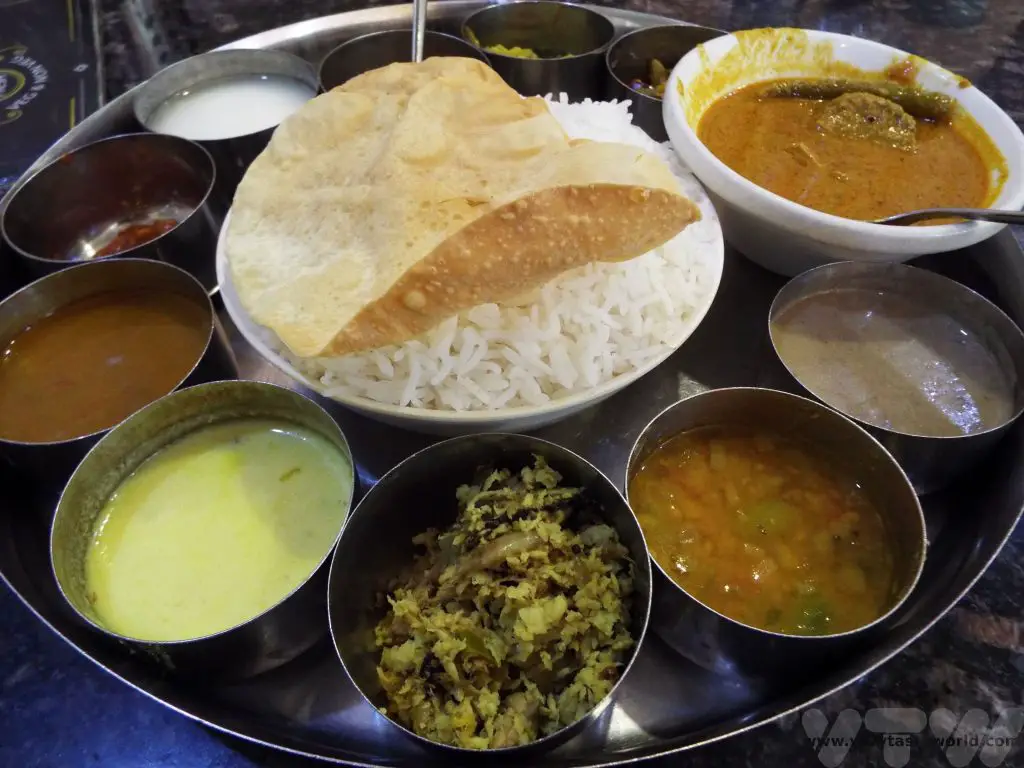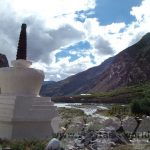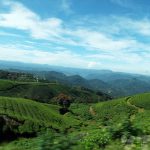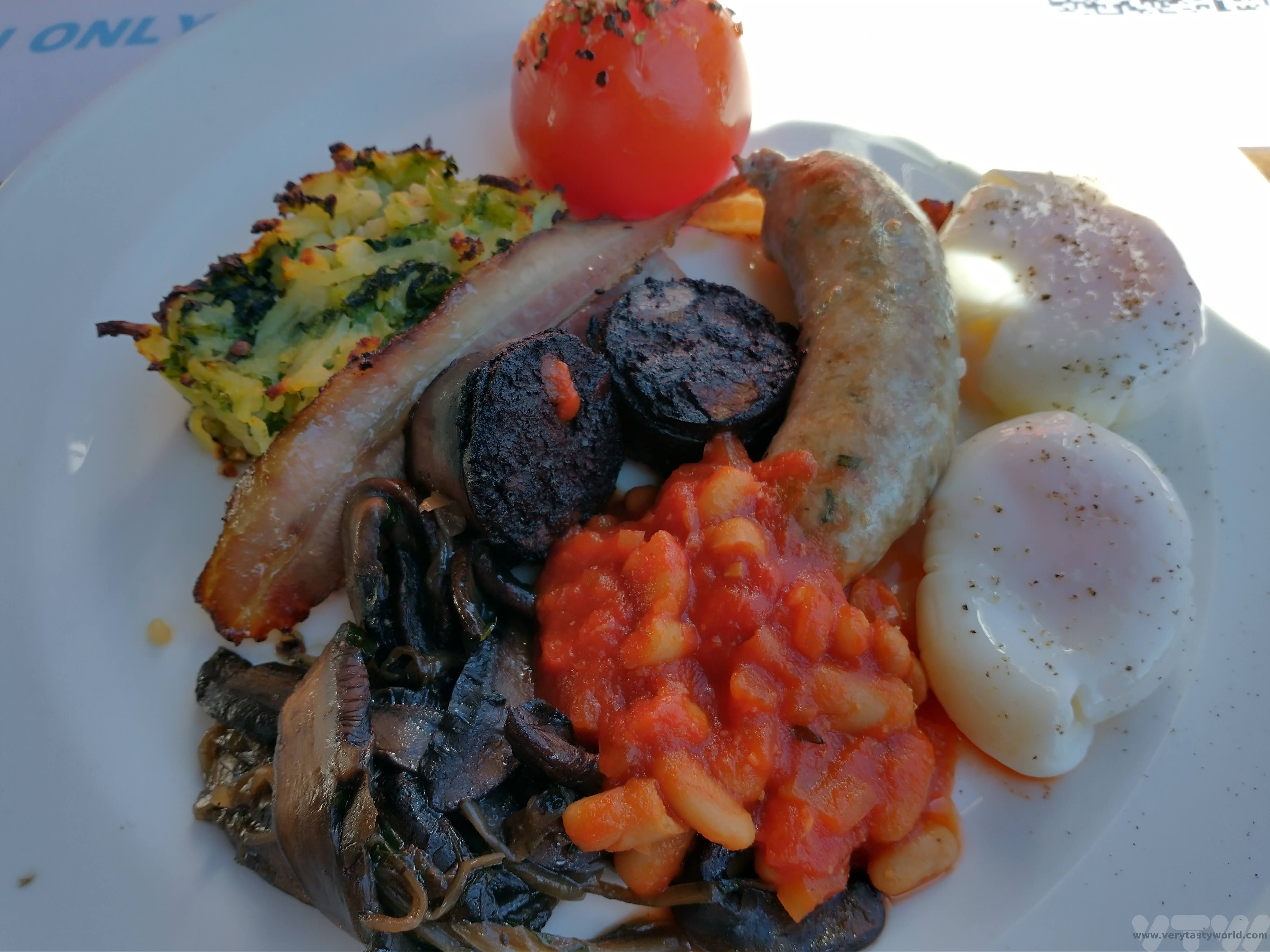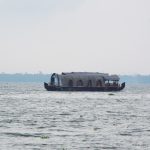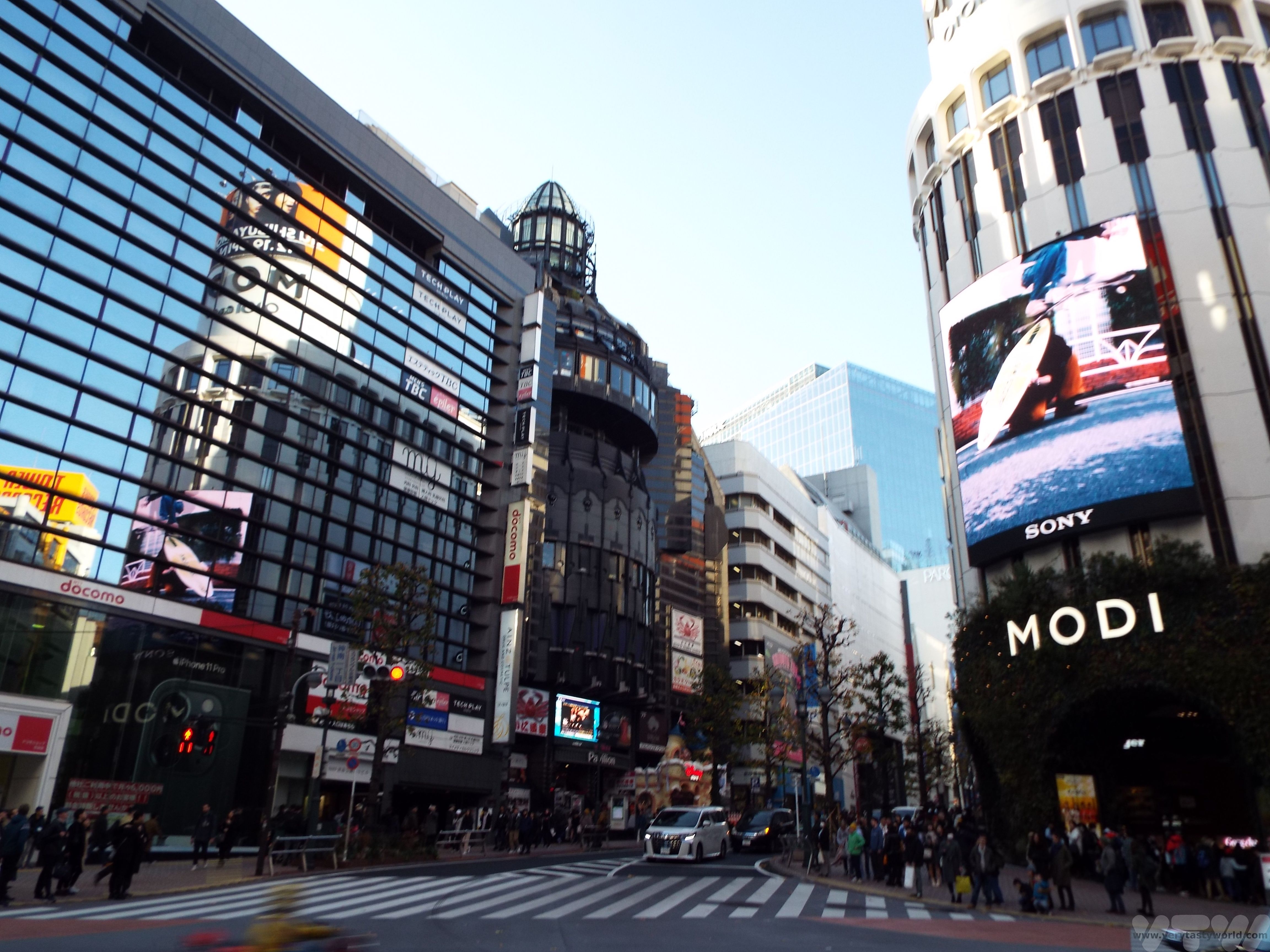Happy, Happy Holi in Nepal
Originating from the Indian subcontinent and celebrating the arrival of spring, Holi is known as the Festival of Colour, Festival of Spring or the Festival of Love. And it really is all three of those things. Like many festivals across the world its date is based on a lunar calendar and it falls on the last full moon of winter. It is celebrated by Hindus, Sikhs and Jains and has become an increasingly popular event all over the world. In the countries that celebrate, Holi is a national holiday when everyone comes together to celebrate spring and love. We were lucky to spend Holi in Nepal a few years ago.
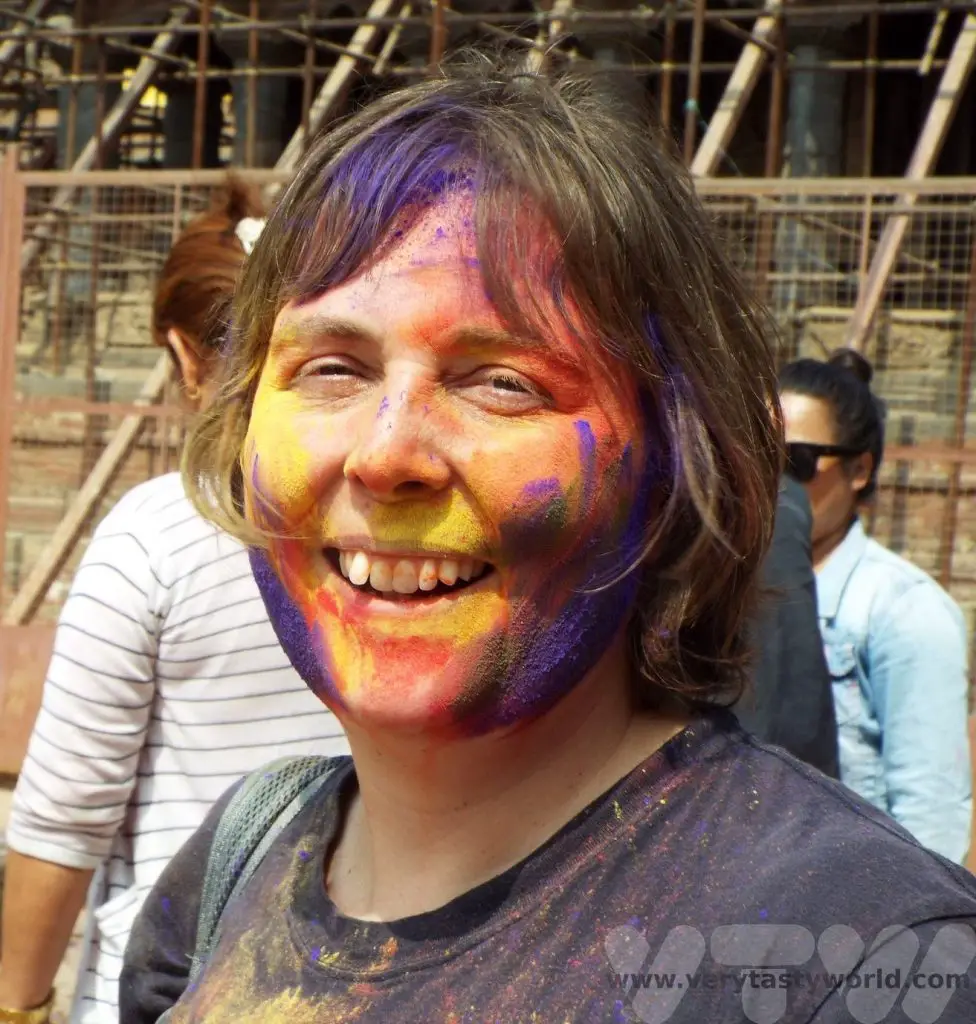
There are a number of rituals associated with the festival and these can vary between different regions. The celebrations start in the evening before Holi with a Holika Dahan where communities gather and light a fire, burning a symbolic effigy of a demoness who attempted to kill her nephew, Prahlad, a worshipper of the God Vishnu. This represents the triumph of good over evil. Traditionally participants contribute wood for the fire and dance and sing together. It’s important to remember that Holi is also about love and repairing broken relationships.
The following morning is Rangwali Holi (Dhuleti), the festival of colour. And it doesn’t matter who you are or where you are from, you are welcome to join in the fun. Everyone takes part and those serious about ‘Playing Holi’ will be armed with all sorts of devices to make the day as colourful as possible – there will be powdered paints, water pistols containing ordinary or coloured water, water balloons (you have to watch out for those as they can be quite a surprise). People often wear white clothes in order to show off all the colours. You can buy paint powder from street vendors everywhere.
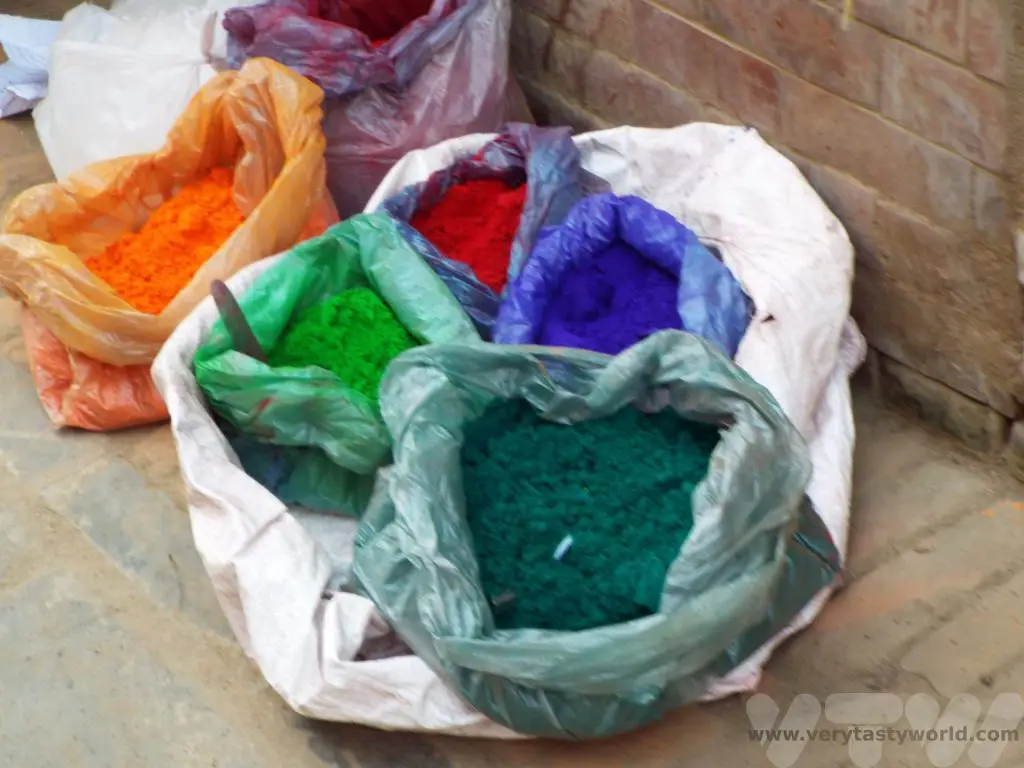
Holi In Nepal
In Nepal Holi celebrations begin eight days before the full moon, starting off with the raising of a chir – a long bamboo pole embellished with brightly coloured strips of cloth in three circular layers. This chir will be burned on the night before the full moon, again symbolising the burning of Holika and the victory of good over evil.
We were in Nepal during Holi a few years ago and it was one of the most fun days we have ever had when travelling. After a fantastic journey travelling through Bhutan and Southern Nepal, including a stay at the Neydo monastery and a couple of days in the Chitwan National Park where we undertook a walking safari and learned to cook with the local Tharu people. We had travelled back to Kathmandu to explore the capital as well as nearby Bhaktapur and Patan, all cities with an incredibly rich cultural heritage. (We will post about these in detail another time.)
Bhaktapur, also known as Khwopa, is a UNESCO world heritage site, a city located some 13km from Kathmandu. It has some of the most remarkable architecture, with squares that contain beautiful temples and statues.
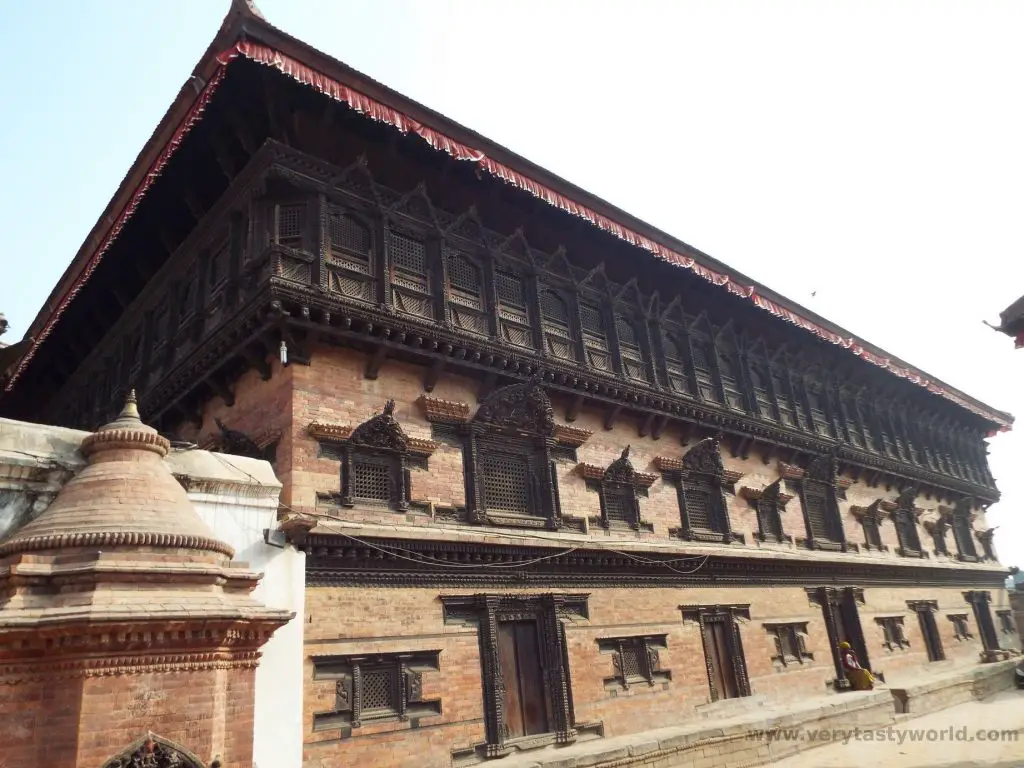
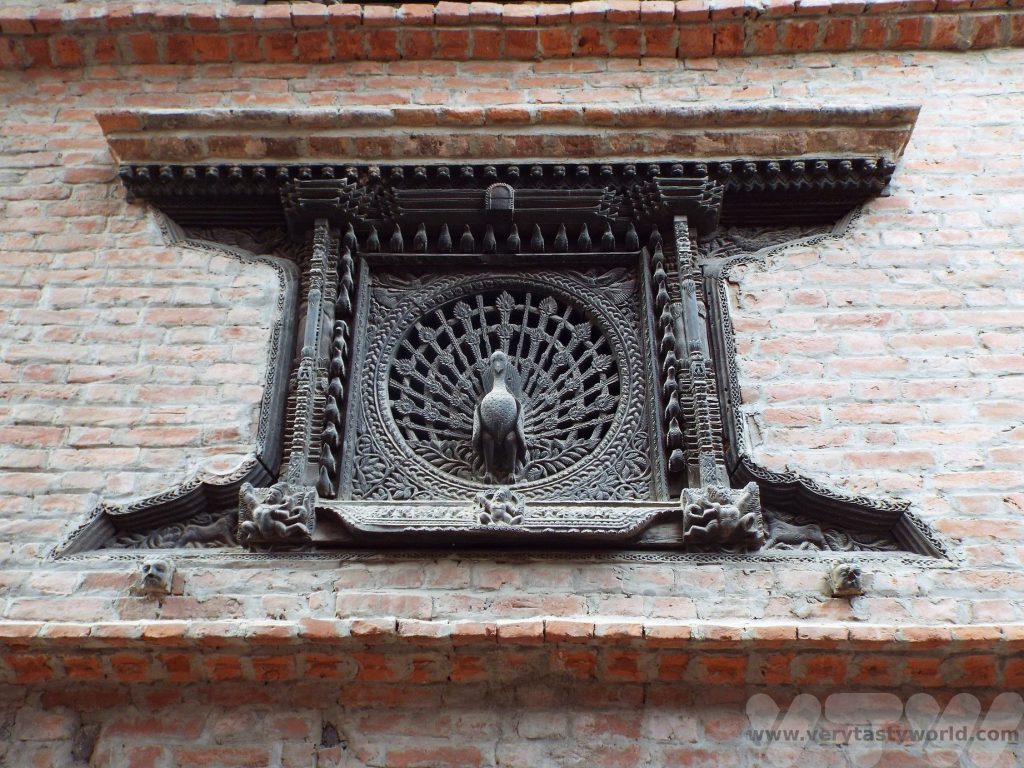
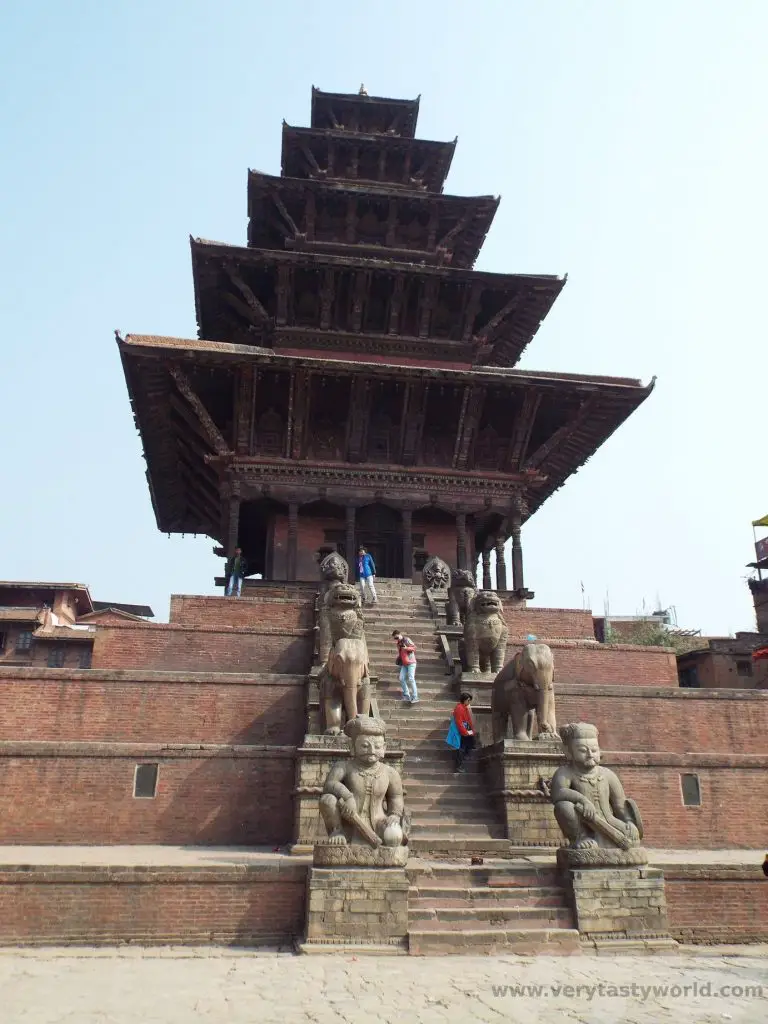
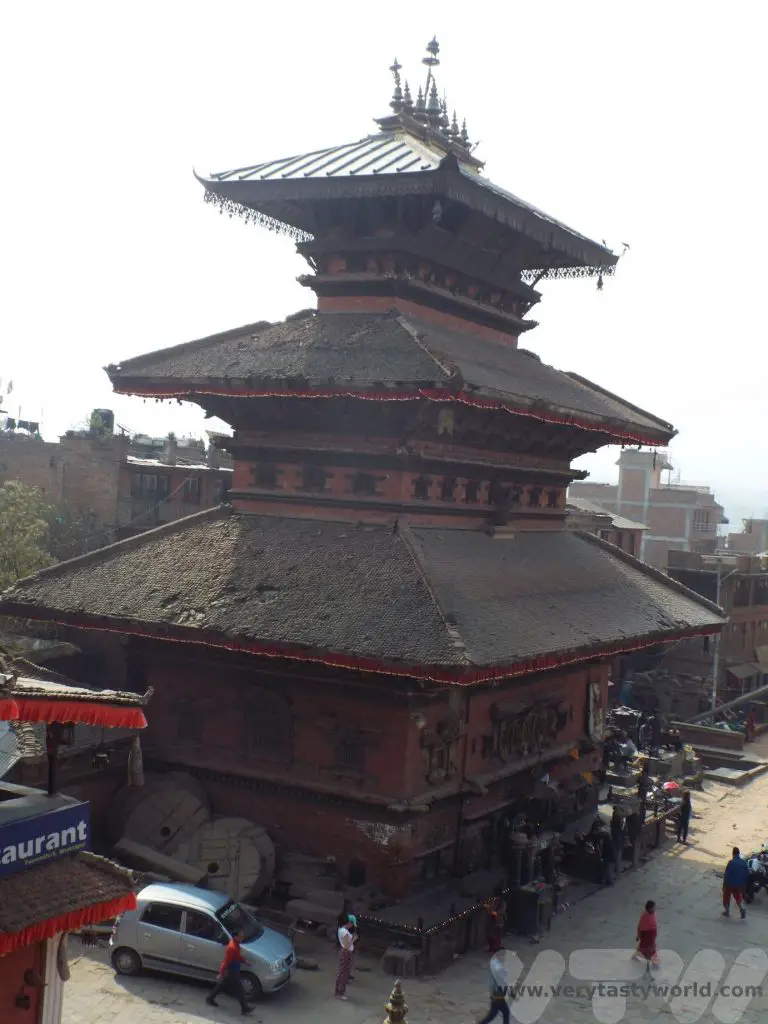
Patan is another UNESCO site. Around 5km from Kathmandu, it is so close to the capital that even though it is Nepal’s third largest city, it almost feels like a suburb of Kathmandu these days. Along with the capital and Bhaktapur it is one of Nepal’s three royal cities. It is also known as Lalitpur – City of Beauty – a title that is hugely apt.
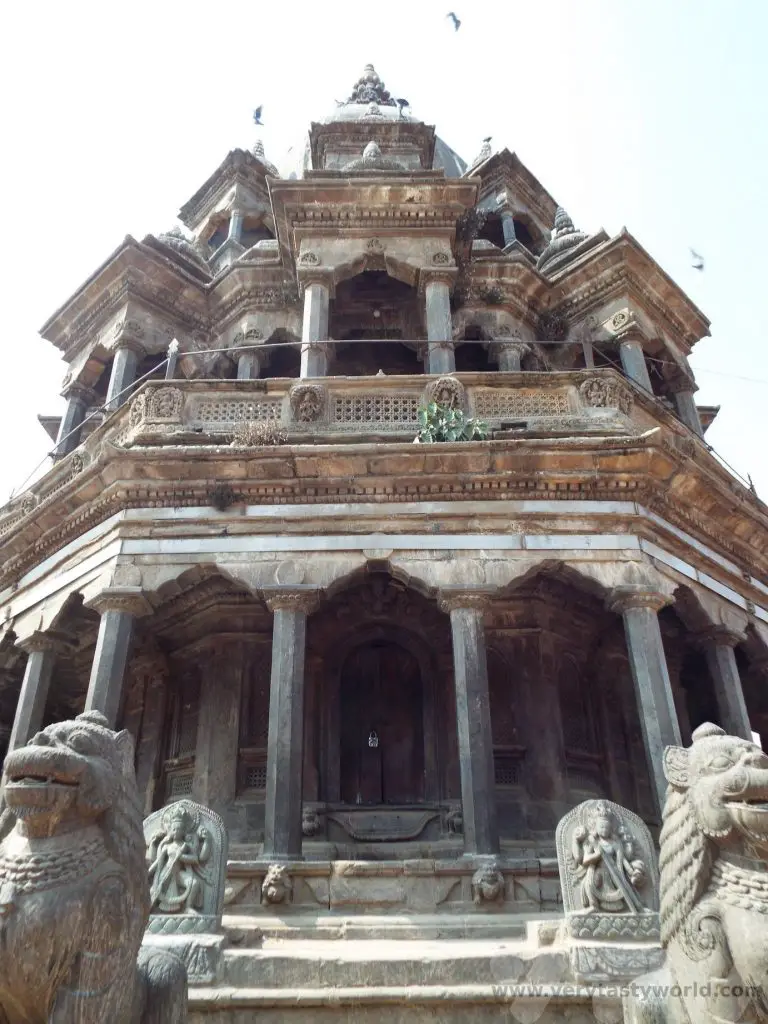
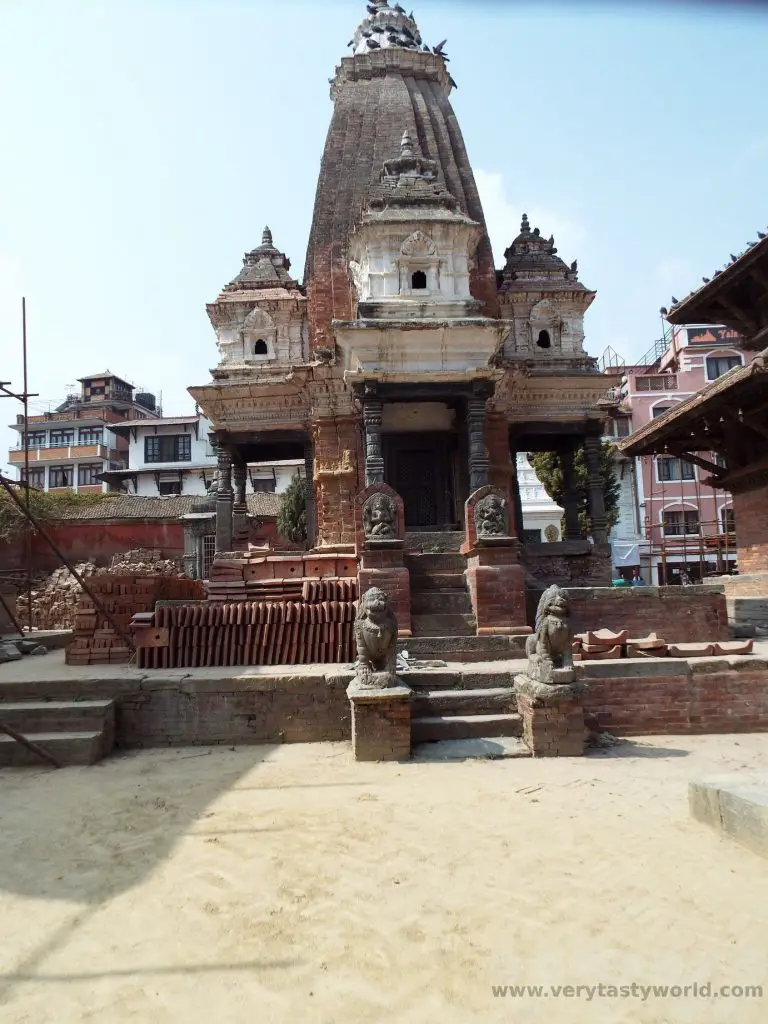
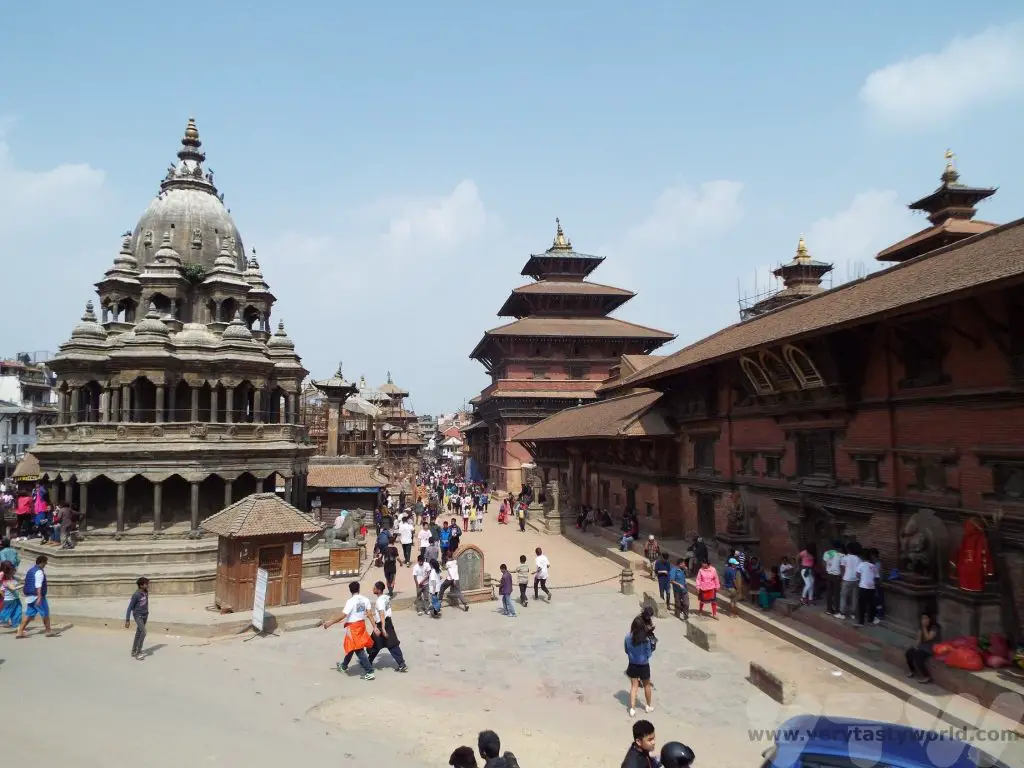
Sadly, both cities and their remarkable historic buildings were badly damaged during an earthquake in 2015 and repairs have been ongoing for some years.
Happy, Happy Holi
Holi began tentatively for us. We were doing a walking tour in the early morning in Bhaktapur when a smiling young man approached us as we were strolling down a side street, smeared a little red powder paint on our cheeks, and declared “Happy Holi!”. We wished him the same.
As soon as we had paint on our faces we quickly discovered that we were fair game. People would come up to us and anoint us with paint powder. Children bearing water pistols would quietly approach us then squirt us before running away, shouting joyously as we gave chase, their families looking on smiling and laughing. And we loved every moment.
Moving on to Patan, by mid-afternoon the town squares were filled with crowds as music played loudly and colours filled the air.
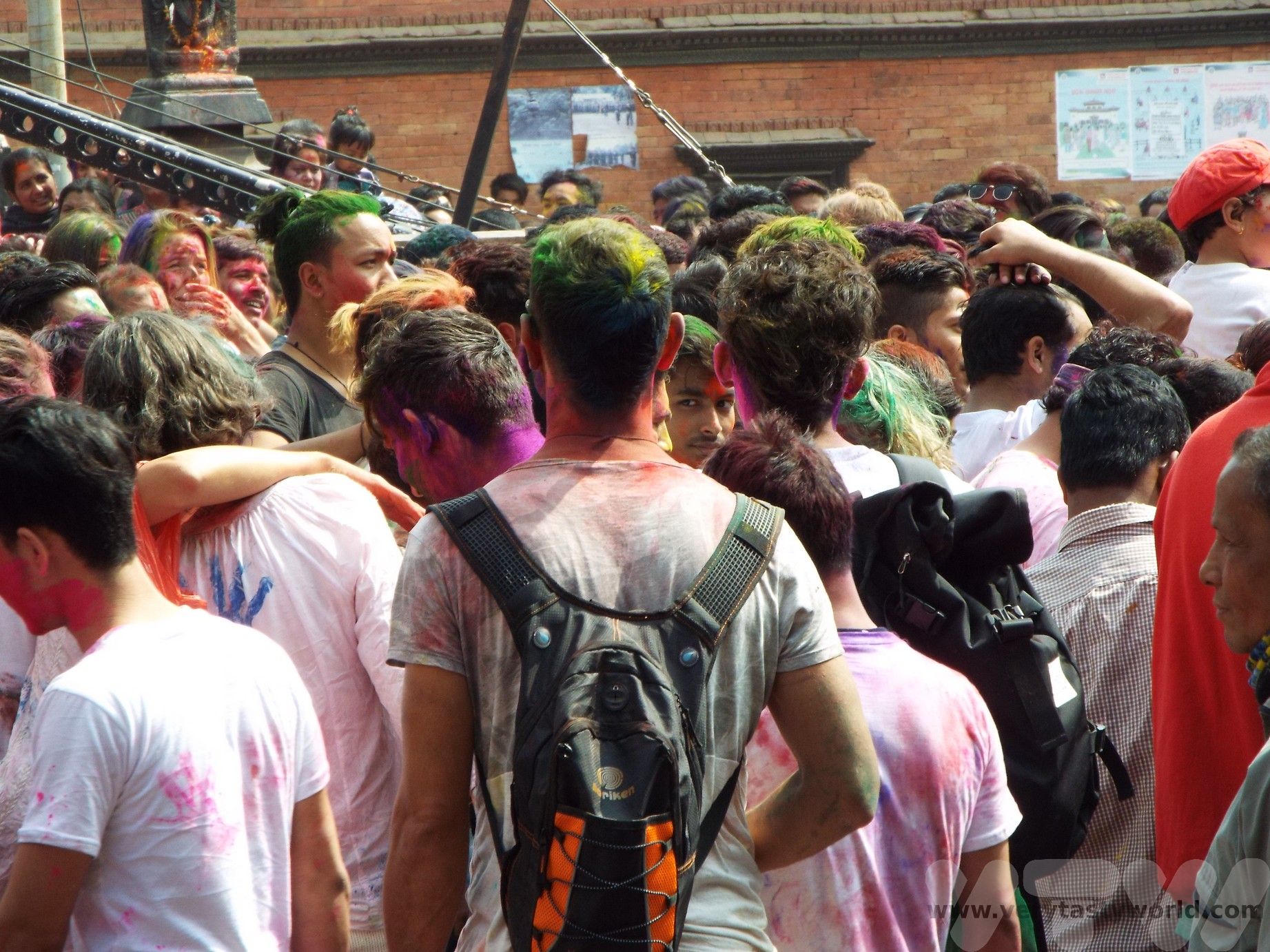
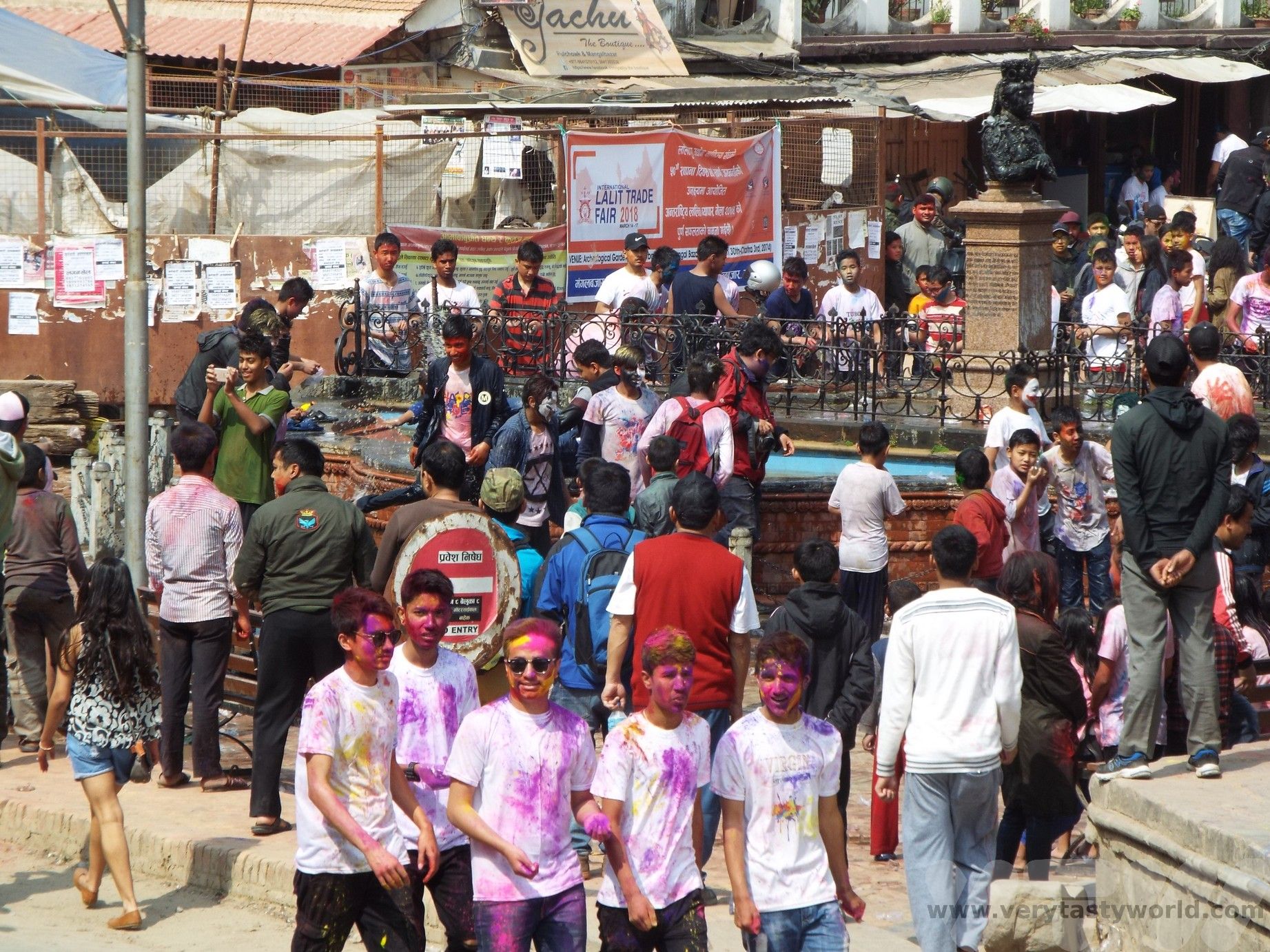
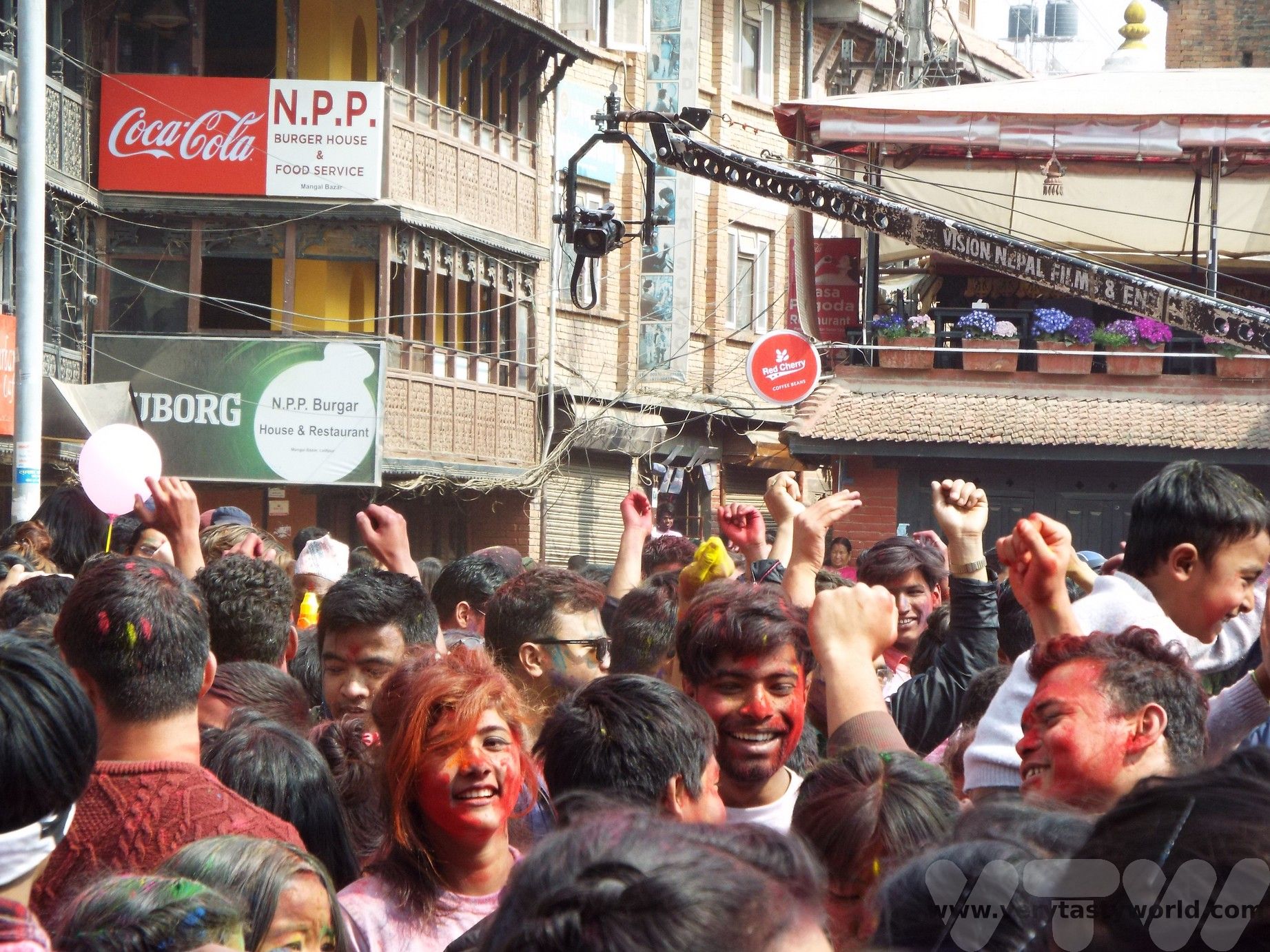

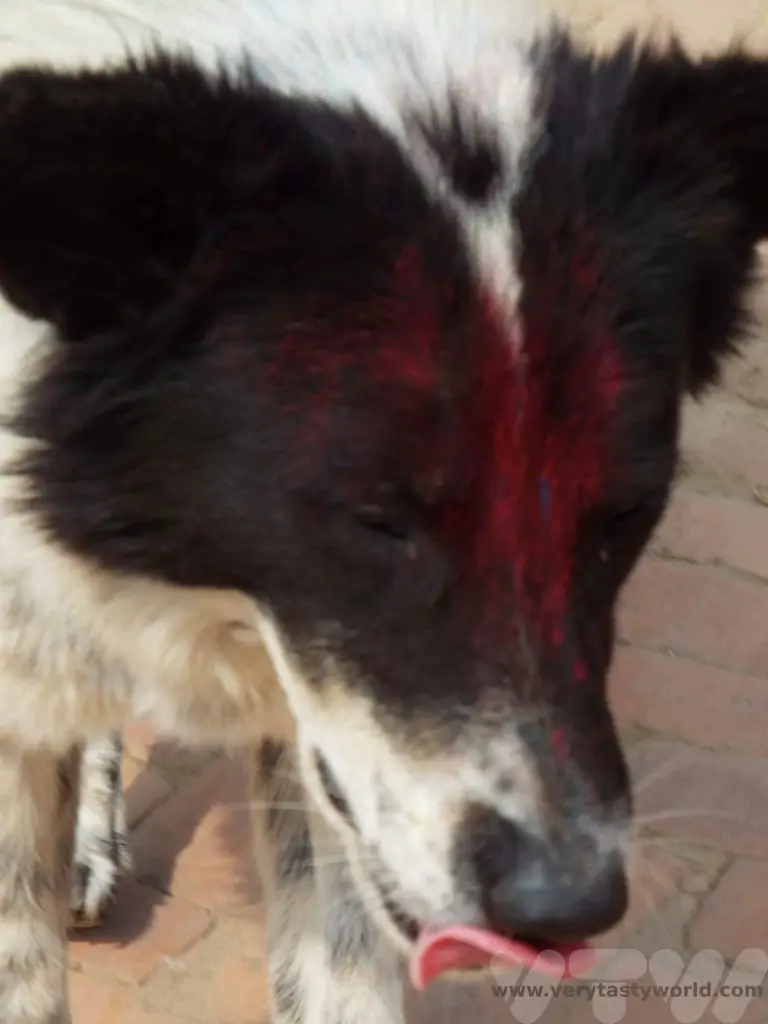
Even one of the local dogs took part.
Walking through the town people were singing and dancing in the streets, “Happy, Happy, Holi!”
It was lovely looking out at the celebrations over Durbar Square.
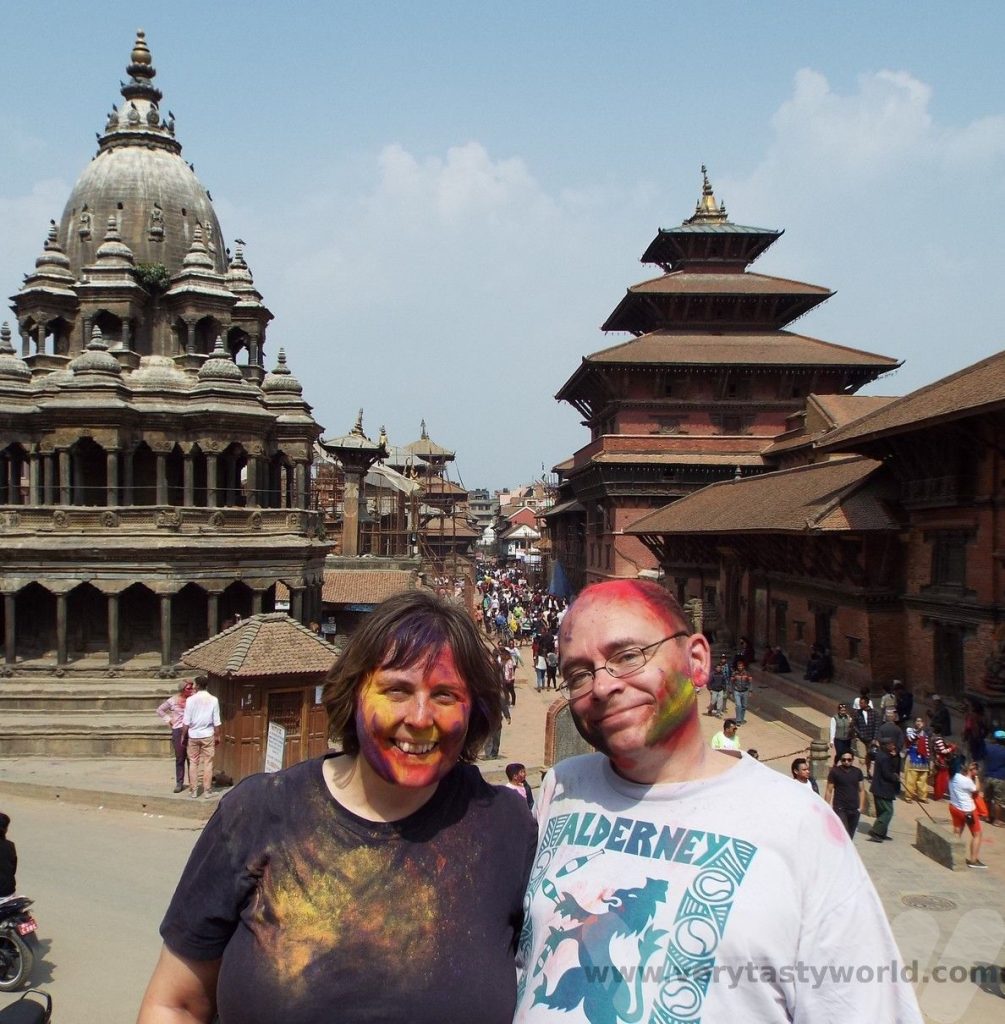
Holi In Nepal – Celebratory Food
Of course we wanted to try some of the local food. At a tiny restaurant off one of the side-streets near Durbar Square in Patan, we joined local people sitting on benches in front of low tables, and discovered chatamari. We sat down on a bench and watched the cook expertly make this lovely dish. It’s a celebratory food and it seemed entirely appropriate for the day.
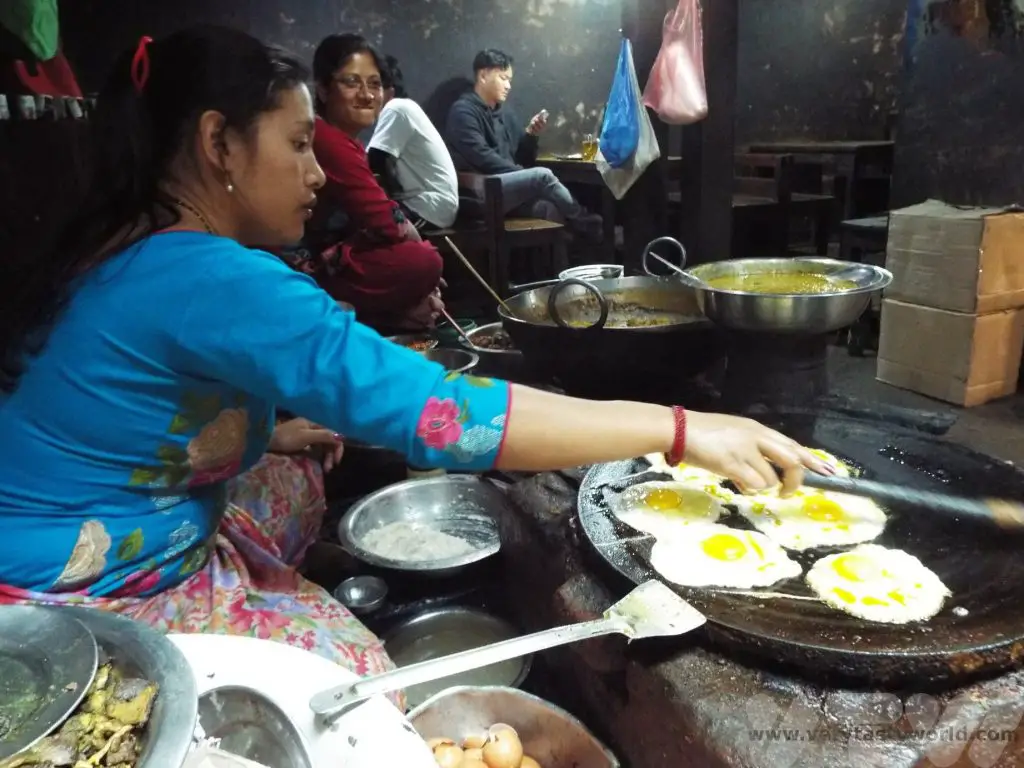
Chatamari is a specialty of the Newar community of the Kathmandu valley. It is like a pancake with toppings. The batter is made from rice flour, spices and eggs. It is then fried on top of a circular flat grill and various toppings are added as it cooks – ours comprised minced meat, onions and a fried egg – but fully veggie options are available.
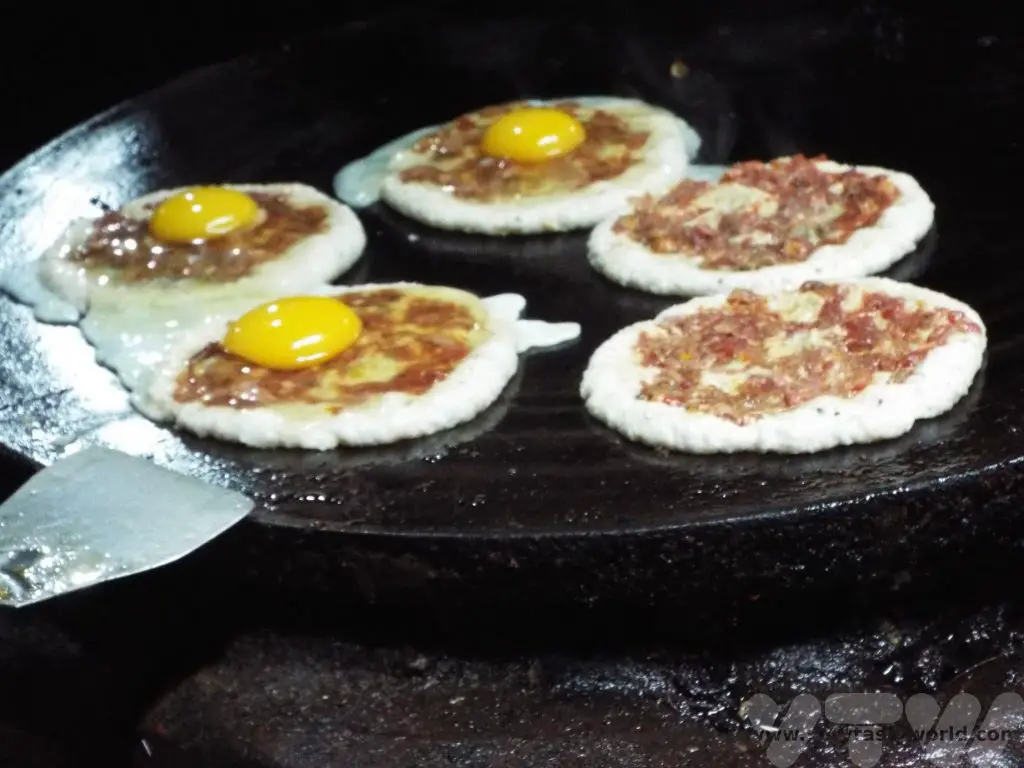
These were the star dish but were accompanied with some roasted lamb, a potato curry and bhuteko bhatmas, soybeans roasted in Nepali spices, which were spicy, crunchy and absolutely delicious. (And perfectly complemented a nice, cool beer.)
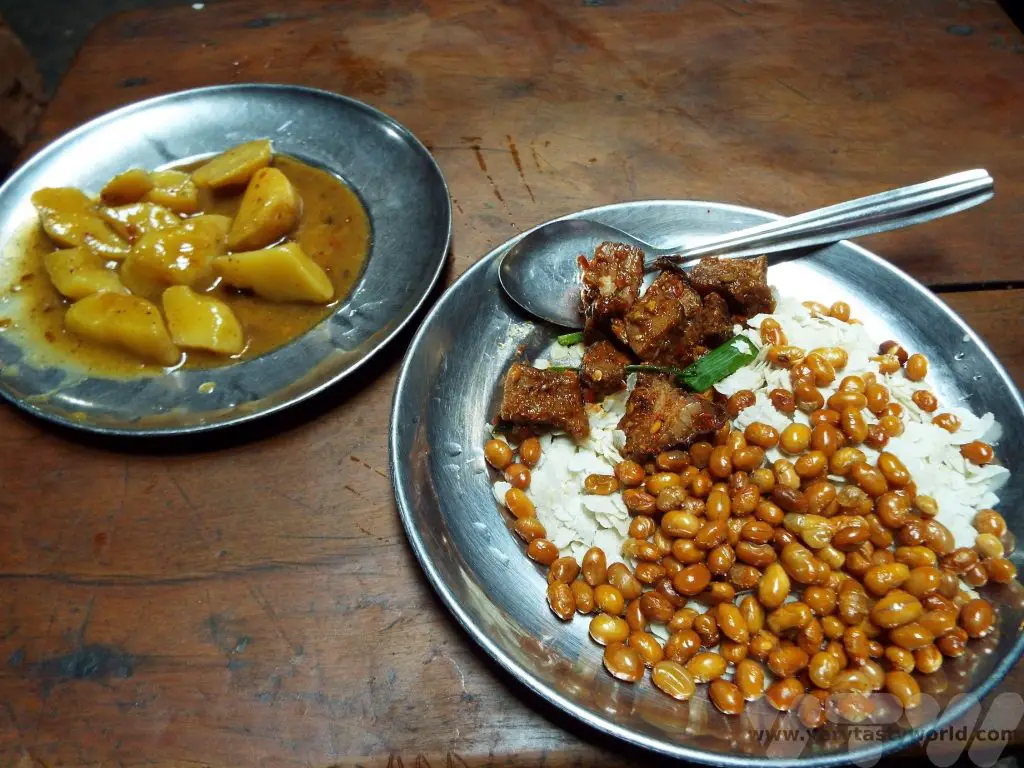
After lunch it was time to head back into the happy mayhem and explore further. The local children were particularly interested in playing Holi with us. Just as we were about to leave Patan we asked a passer-by to take a photo of colourful us – by the time he had figured out the camera setting… PHOTOBOMB! The kids were very happy to show us their pre-prepared waterbombs.
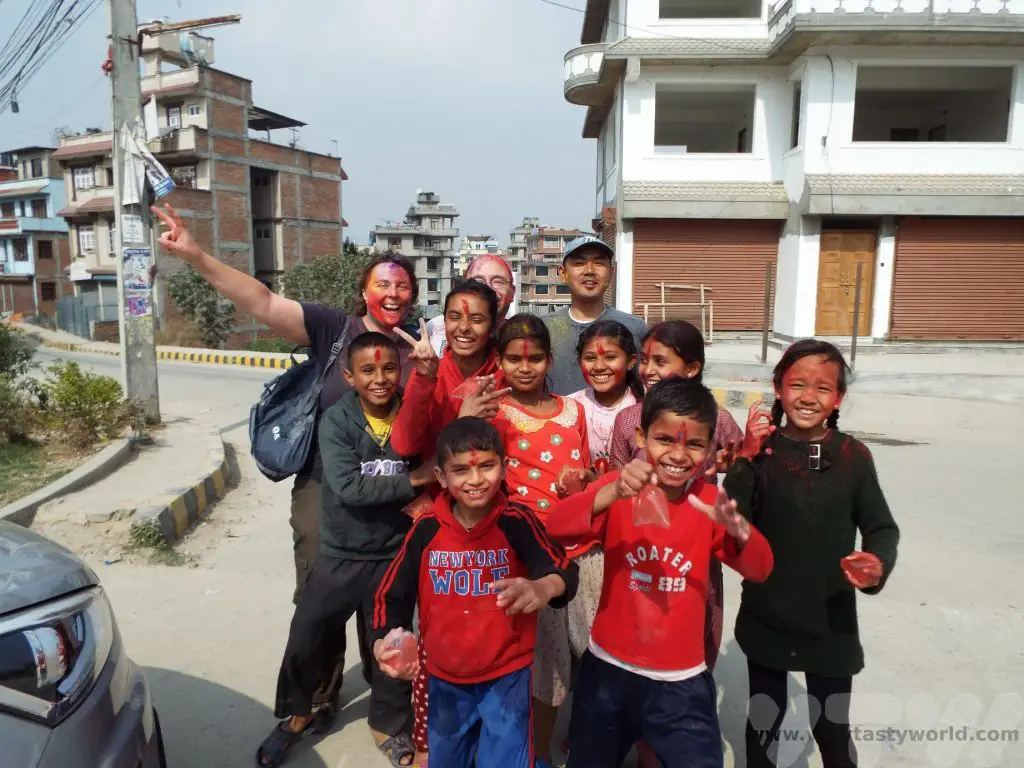
Arriving back at our (relatively posh) hotel in Kathmandu, absolutely covered in paint, we were a little unsure about how we would be received. Nobody minded, they knew it was Holi, and the local people were delighted that we had taken part and we were greeted with smiles. We showered very carefully, doing our utmost not to get paint on the hotel’s towels. We were largely successful.
Holi in Nepal was one of the most colourful, delightful and – above all else – happy festivals we have ever attended. It was truly a day of joy.
Related Posts You May Enjoy
Places To Visit In Chitwan, Nepal
Cooking Tharu Chitwan Nepal
The Chitwan area of Nepal is a national park that is located around 100km from Kathmandu. It takes around two to four hours to travel there from the capital (sometimes much longer if the roads are busy – our return journey took 10 hours!) depending on the route. But it’s a pleasantly scenic drive across the Nepalese countryside (we travelled there after spending a night at the Neydo monastery) once you have escaped the busy roads of the capital city. It is possible to fly from Kathmandu but this is a more expensive mode of transport. There are lots of places to visit in Chitwan. The area is best known for its wildlife but it is also possible to meet the local Tharu people and learn to cook with them.
Wildlife Walking Safari in Chitwan National Park
Chitwan is best known as a wildlife reserve where you can undertake a boat or walking safari and – if you are amazingly lucky – you may be able to see wild elephants, rhino, bears or even a tiger. If you’re merely lucky you will catch a glimpse of monkeys, deer and birds. And maybe chance upon some rhino poo to prove that they really were somewhere in the forest, honest.
We caught a jeep from our hotel to the river early in the morning and climbed aboard a long boat, so we could float serenely downriver.
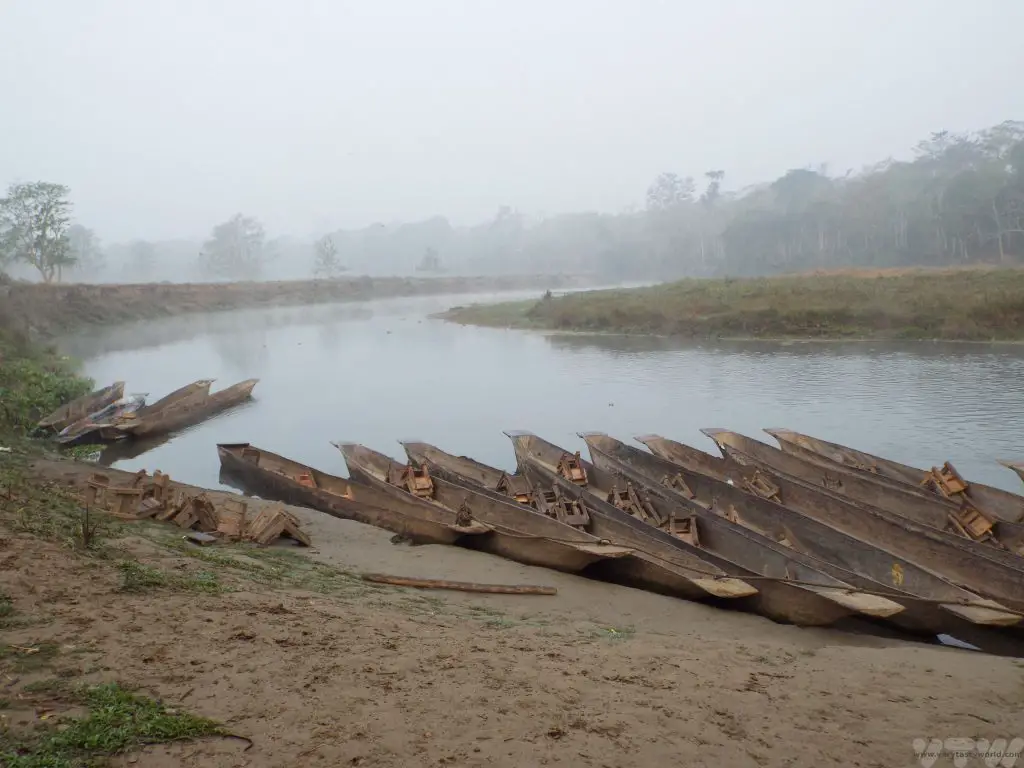
There were lots of birds to see, including brightly coloured kingfishers, and we passed by a crocodile, who was almost as long as our boat, also enjoying a leisurely time in the river.
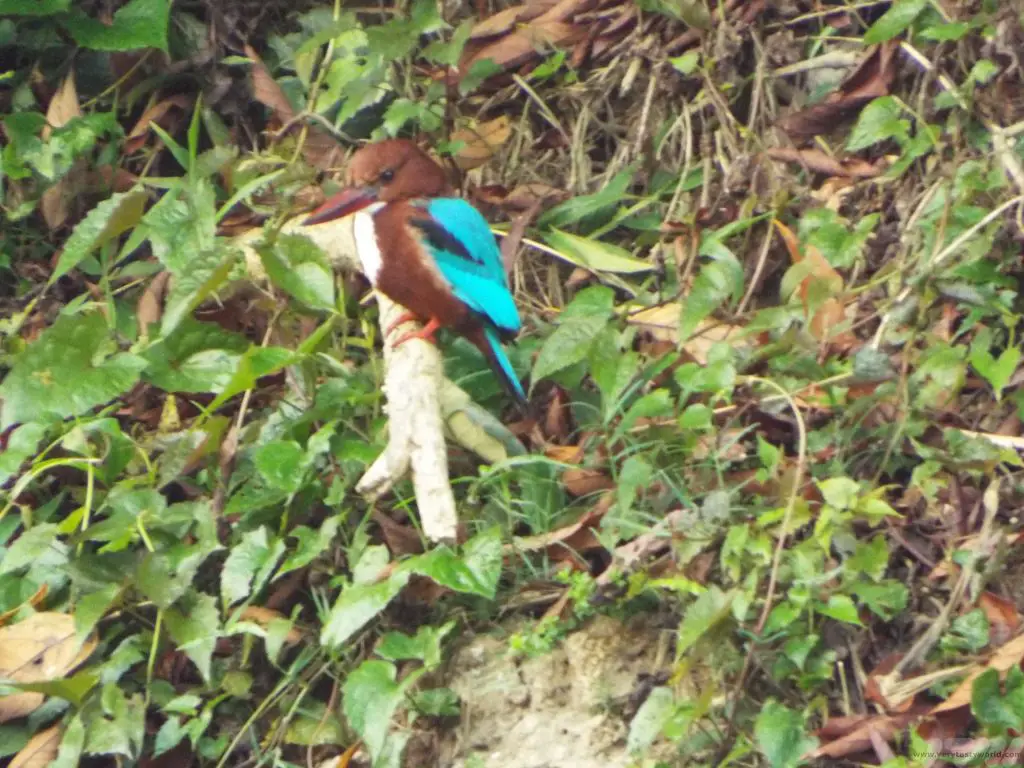
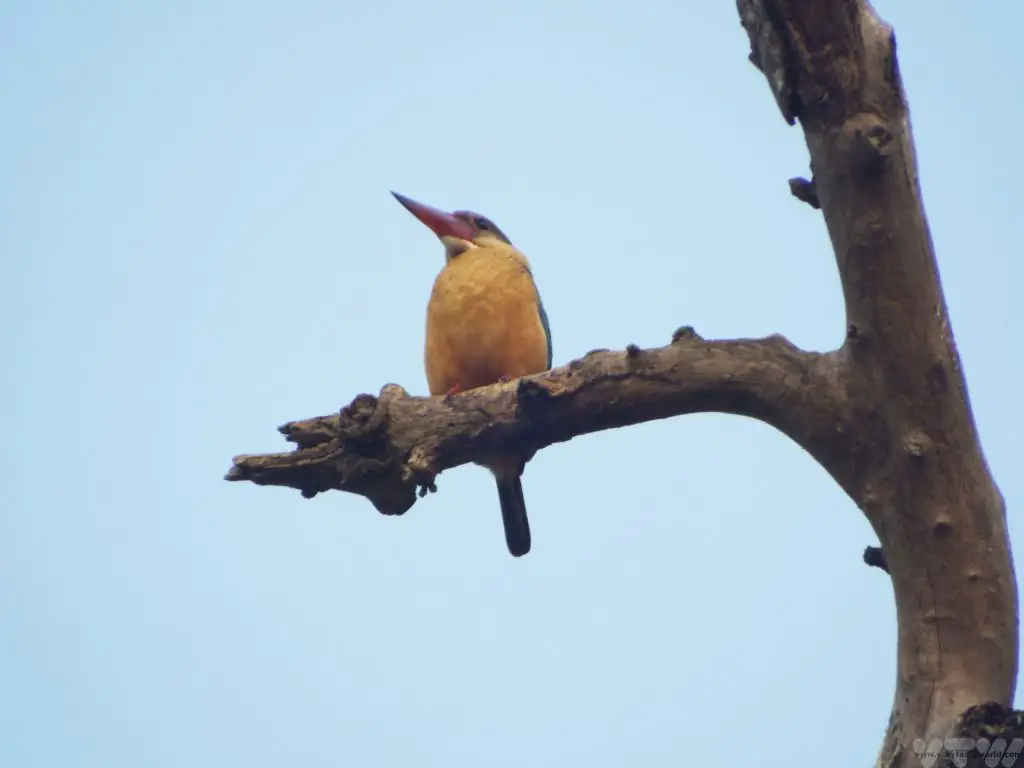
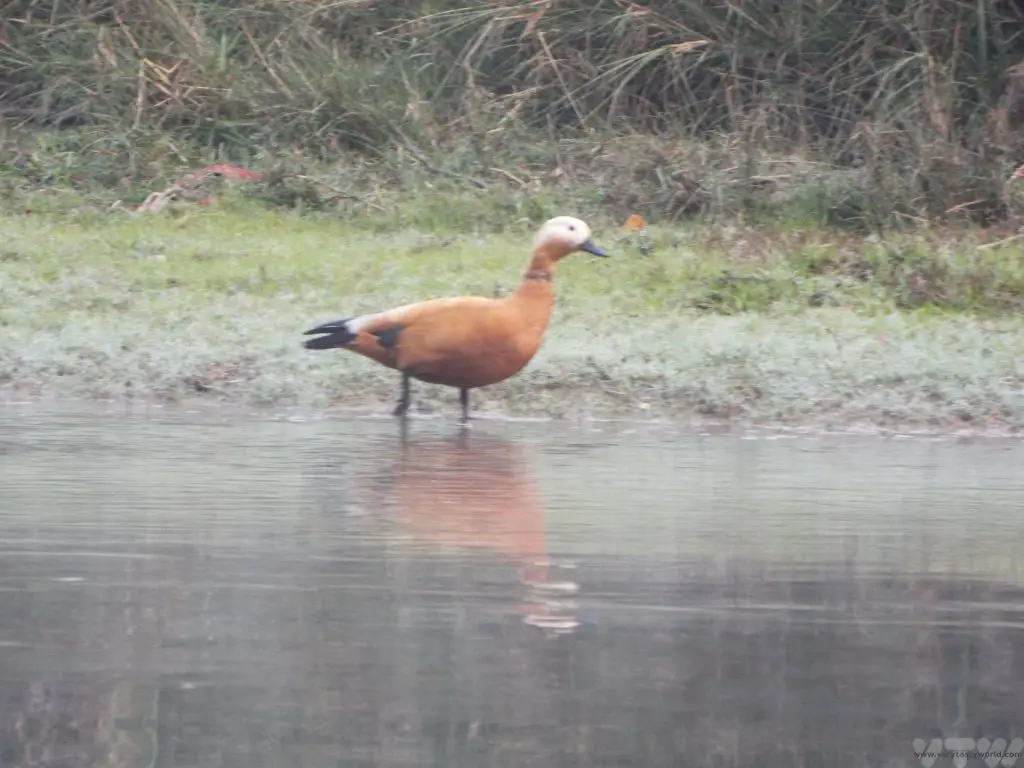
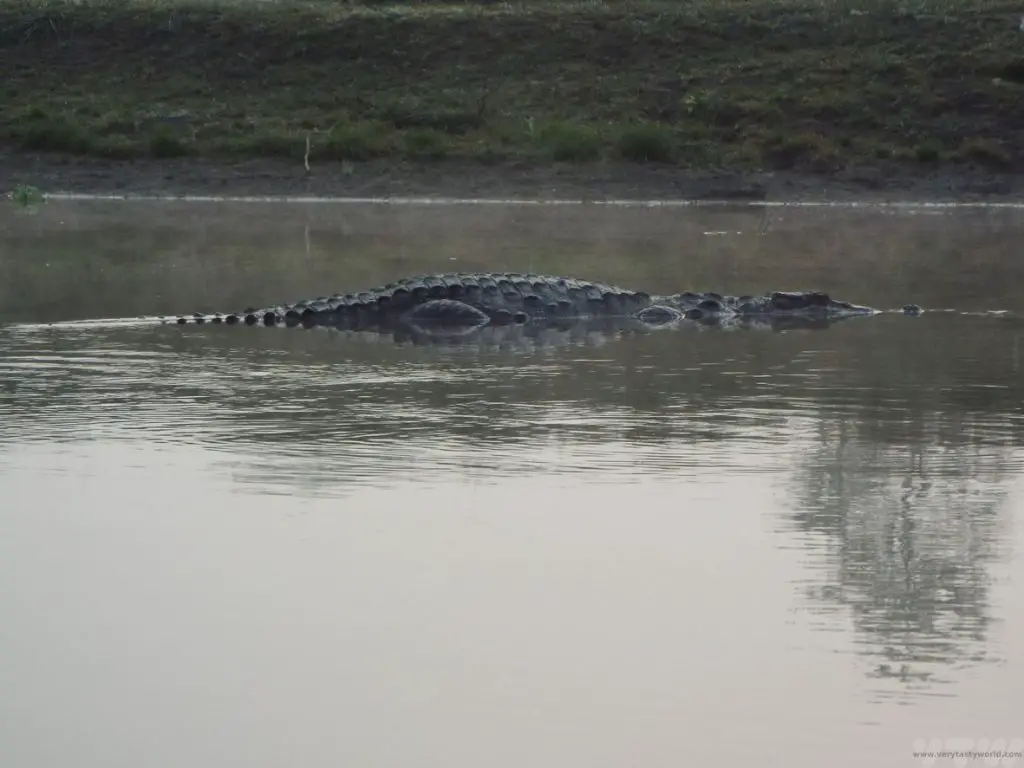
After around an hour we disembarked and met our guide for a walking safari.
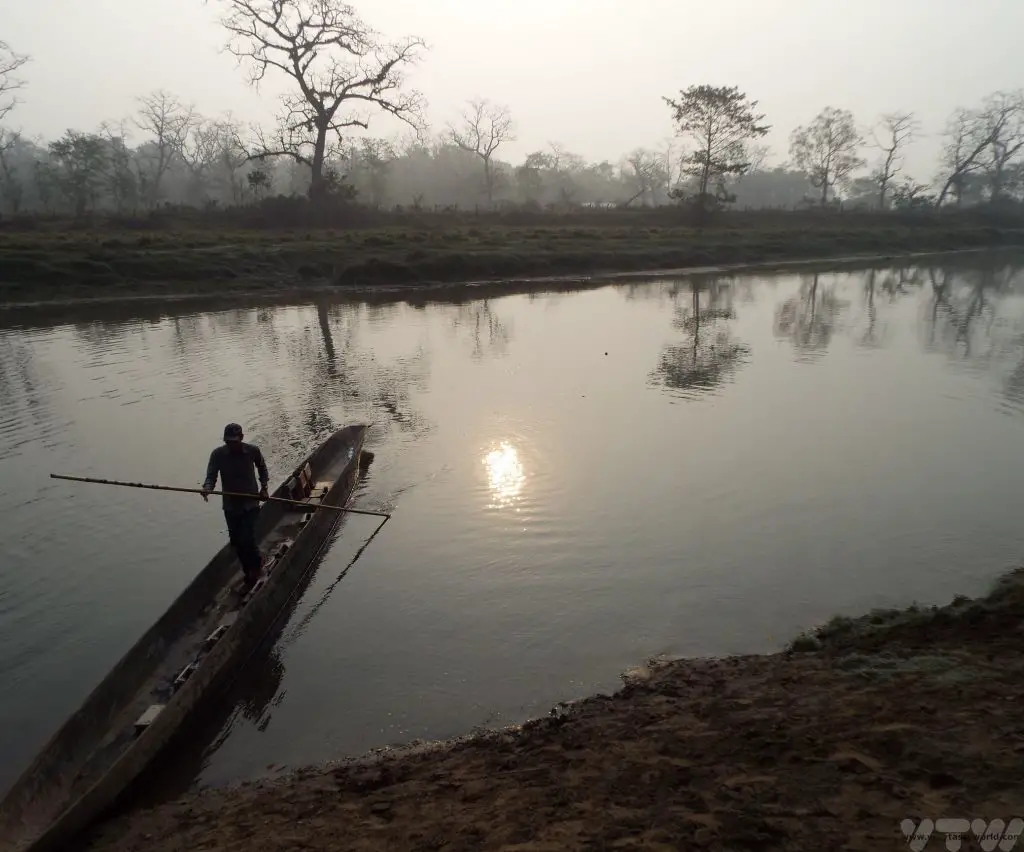
We were given a pep talk whereby we learned what to do if we were to encounter any of the amazing, but potentially dangerous, creatures. Basically, they can all outrun you, so:
Rhinos – Stand still if you are downwind from them, they have appalling eyesight and probably won’t see you. Back away. If they charge, run away in a zig zag pattern, climb a tree if you can.
Bears – Do not run, avoid eye contact, back away slowly.
Tigers – Stand your ground. Don’t run, all cats love a chase.
Elephants – If they’re in a strop, you’re doomed!
Sadly, we weren’t amazingly lucky and didn’t get to try any of these techniques as the wildlife had decided not to come out to play, but that’s okay, that’s why it’s called wildlife.We did see a strutting peacock, a monkey and some deer.
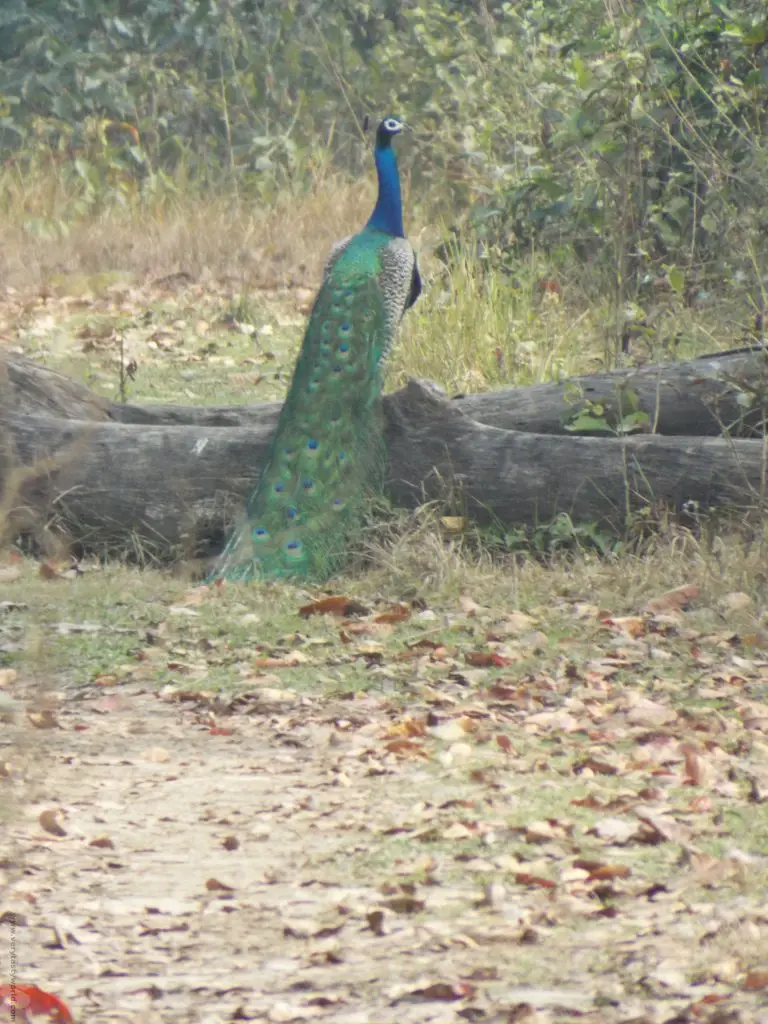
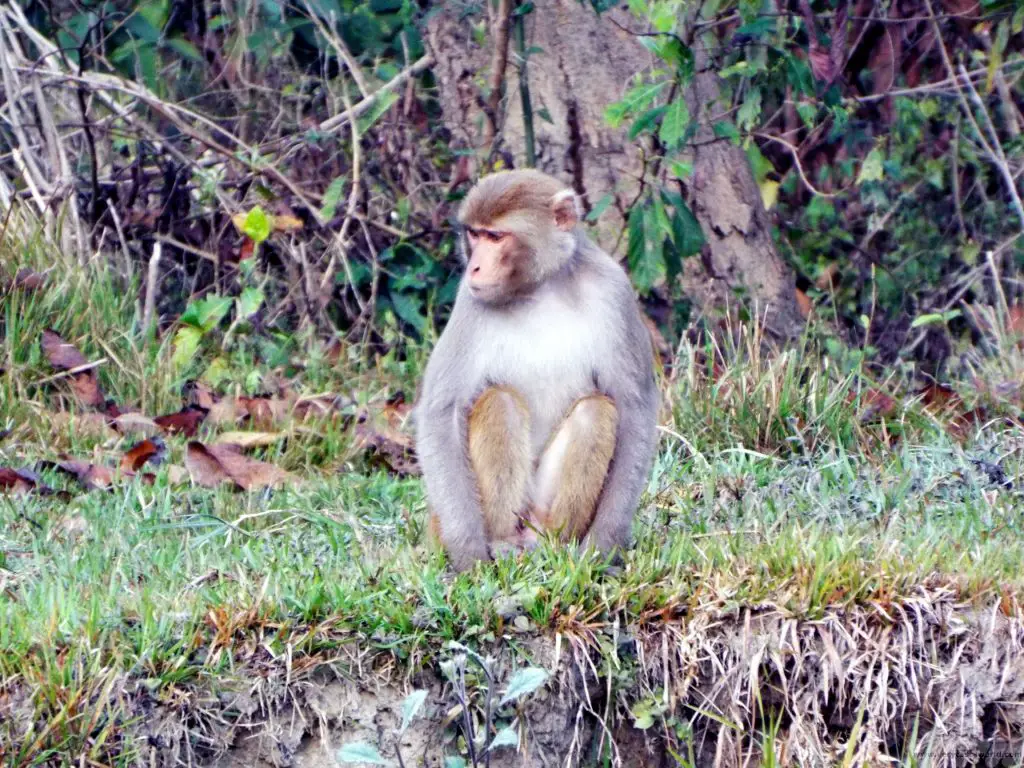
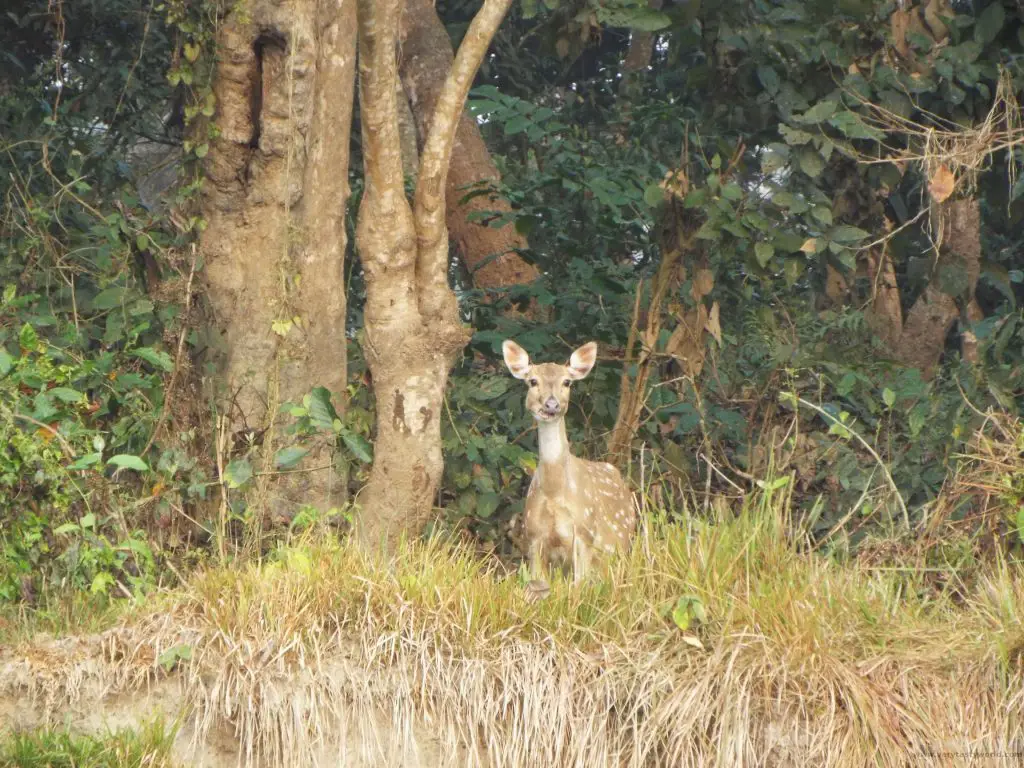
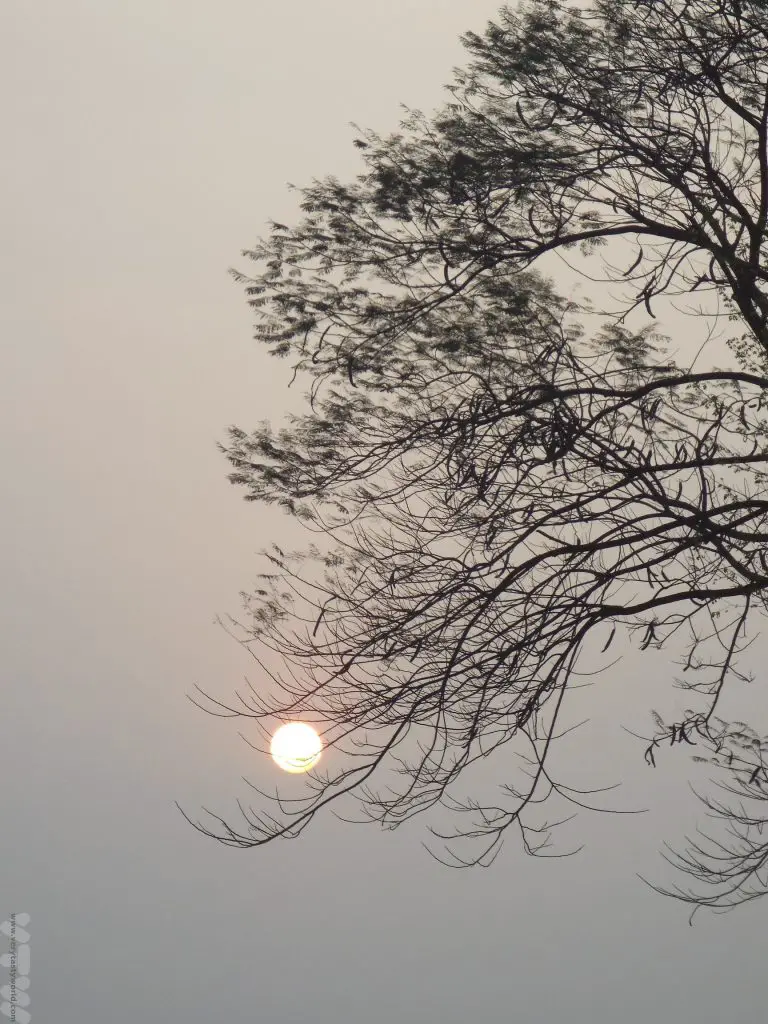
But whether you see spectacular creatures or not, walking through the forest or floating along the river makes for a very pleasant morning.
And did meet one tiger!
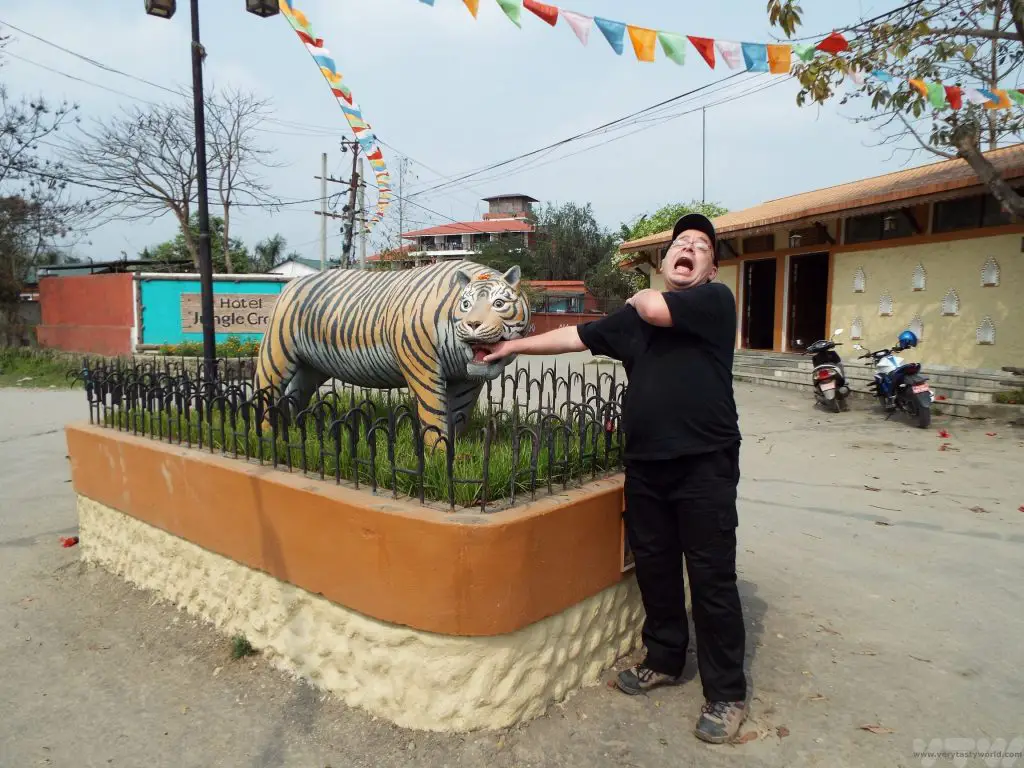
Places to Visit in Chitwan – A Tharu Village
A less well-known excursion is one which takes you to a nearby Tharu village. Local people welcome you and are happy to introduce you to their traditional way of life. This trip can be arranged via your hotel who will organise transport to the village, which is located just a few kilometres from the national park. All the villagers are very welcoming and are happy for you to wander round. Some of the local women have recently set up a home stay so that you can experience the local way of life first hand. If we were to return to Chitwan we would absolutely love to stay with them.
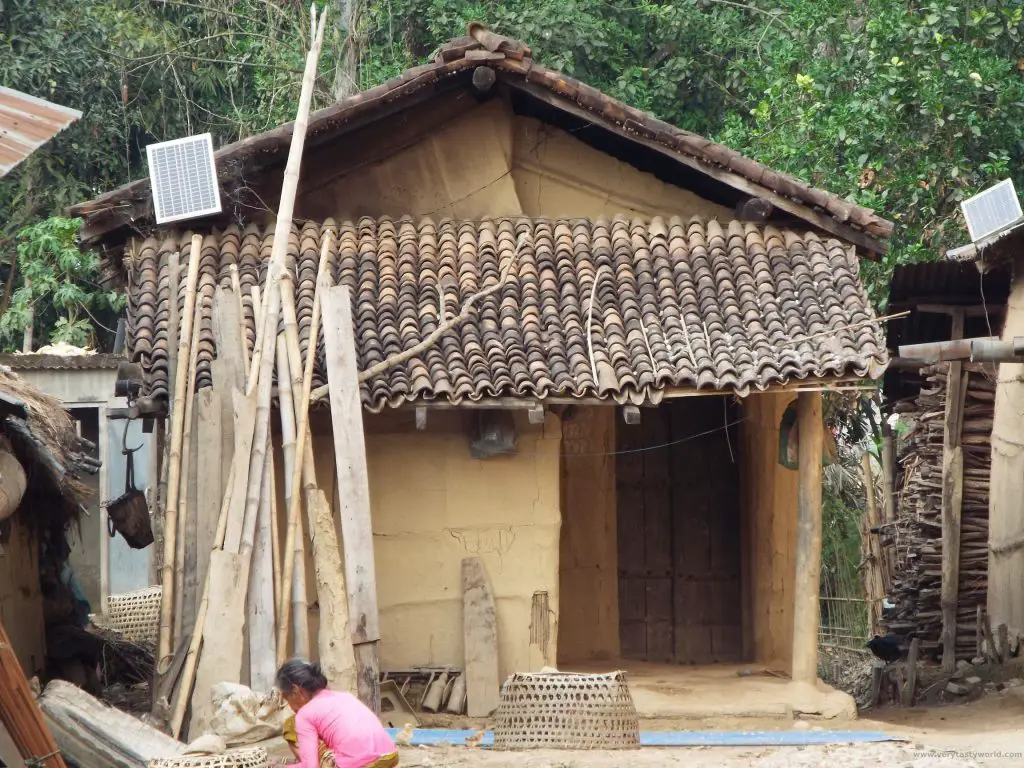
Cooking With the Tharu People
Even if you’re not staying overnight, you can spend a very pleasant afternoon learning to cook traditional dishes with them. We met our lovely hosts who made sure we had a hands-on approach to cooking, right from the start.
The first element of the meal to start cooking is the rice. First of all, get water. There is no running water in the houses so you have to go to the local pump. Wash the rice then add water to the urn. Next, start the fire. The Tharu use an outdoor clay oven fuelled with wood. The oven is located between the houses.
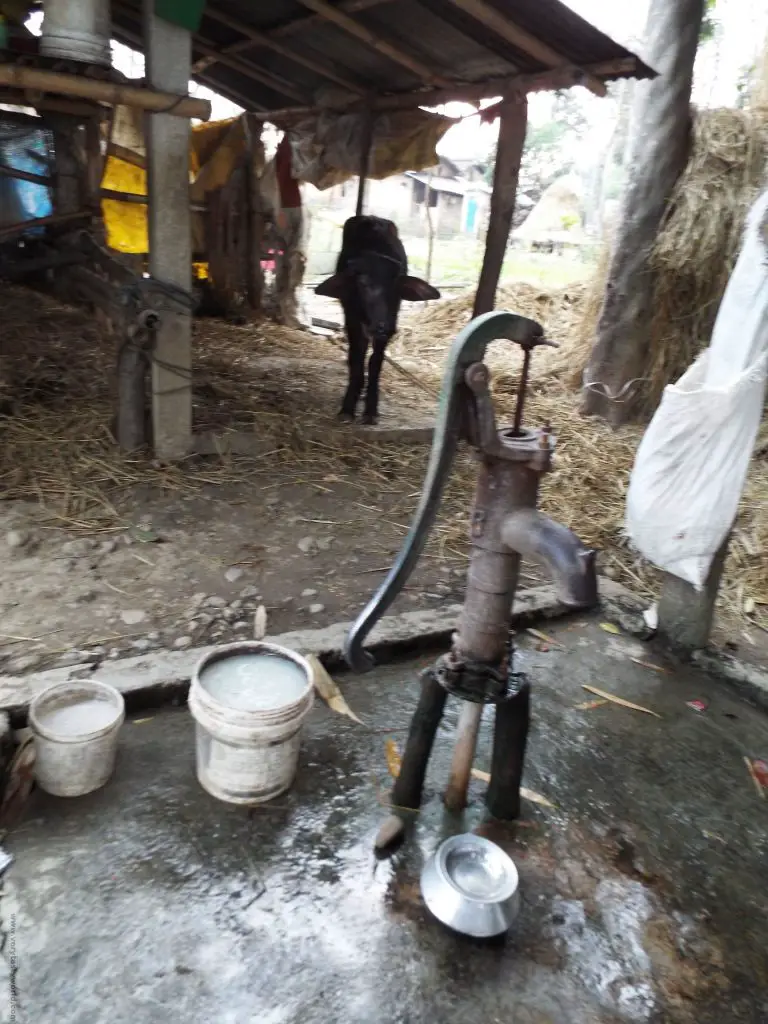
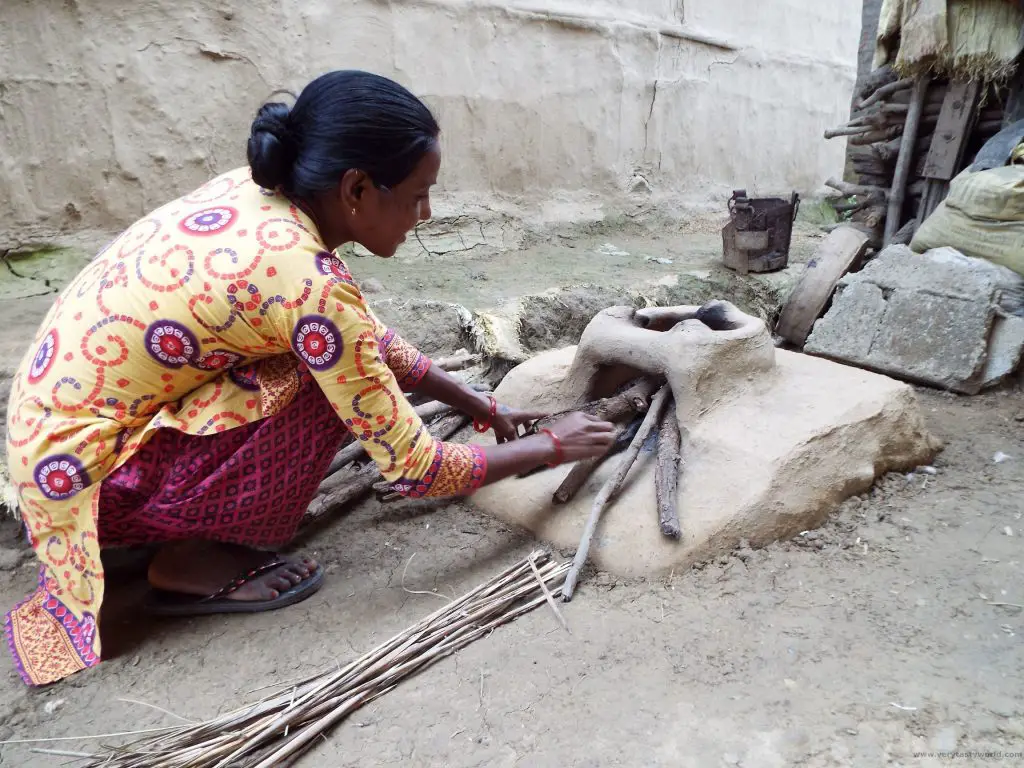
Some kindling starts the fire and then the wood burns slowly to create an intense but steady heat. Pop the rice into the water vessel, put it on the fire and let it start cooking.
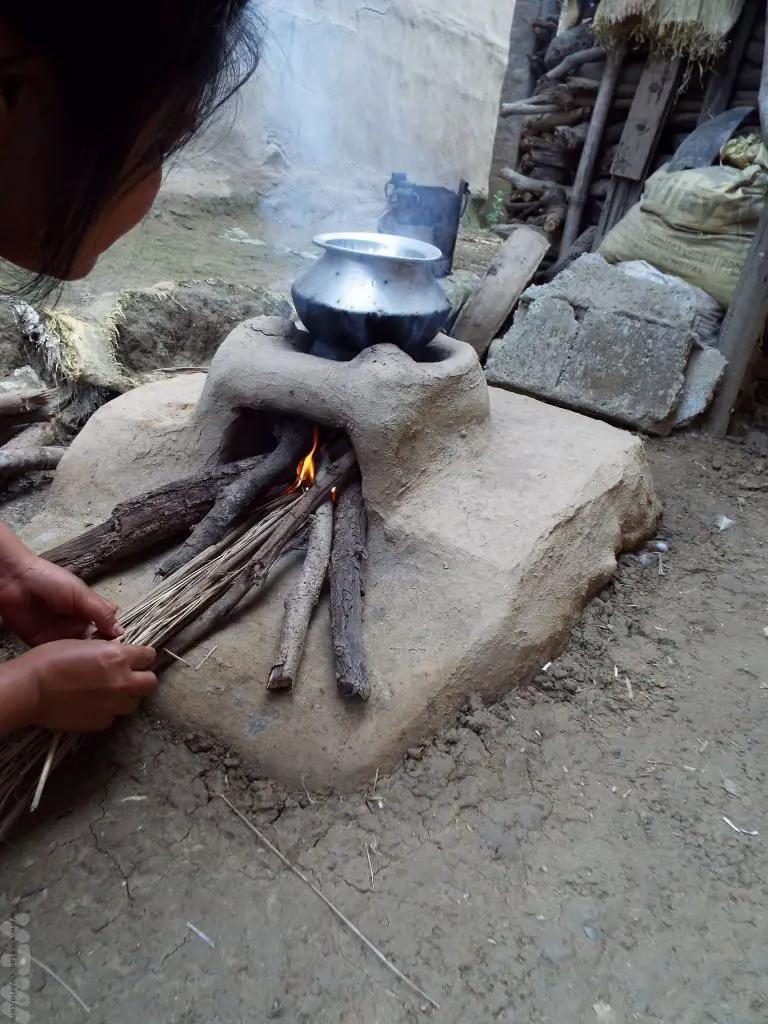
We then went for a walk in the local area to find ingredients. The Tharu grow a lot of their own vegetables on land adjacent to the village. These include onions, rice, beans, wheat and corn. It was particularly interesting to see lentils growing – we’d only ever seen them dried and they only ever came in packets from the supermarket.
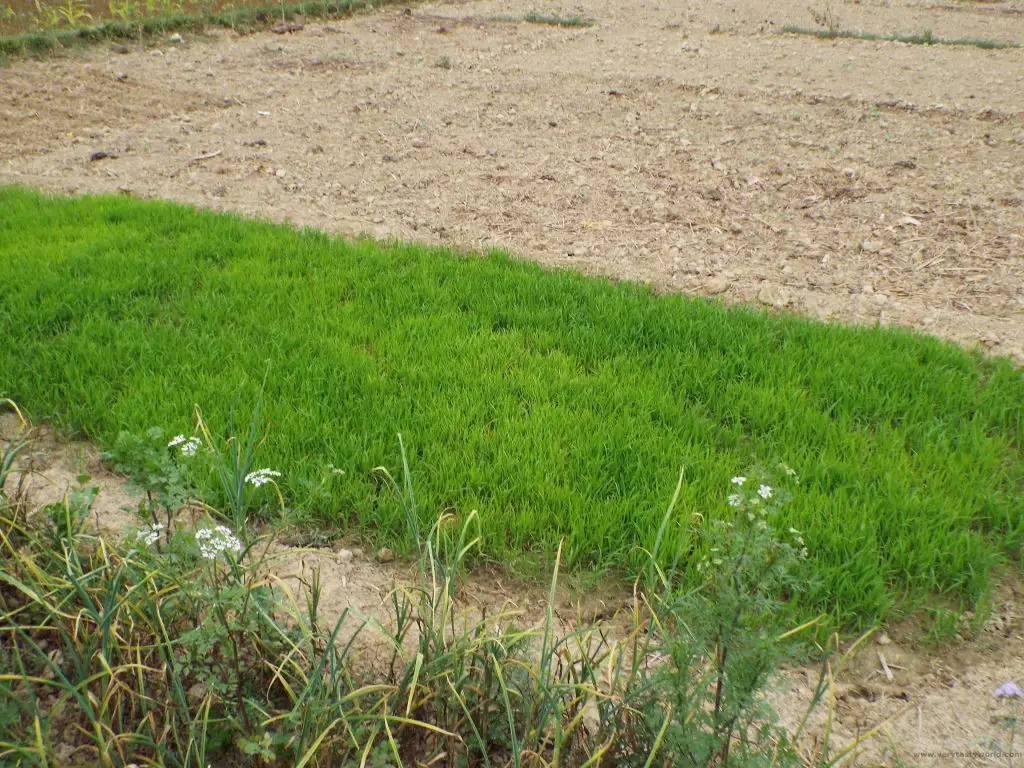
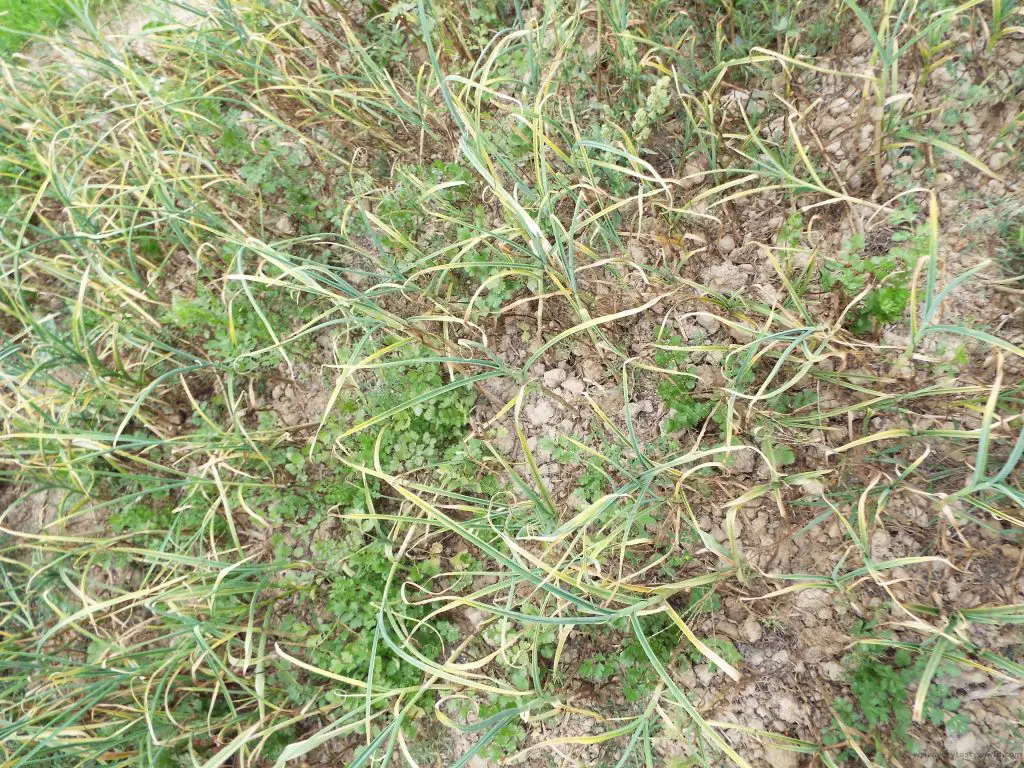
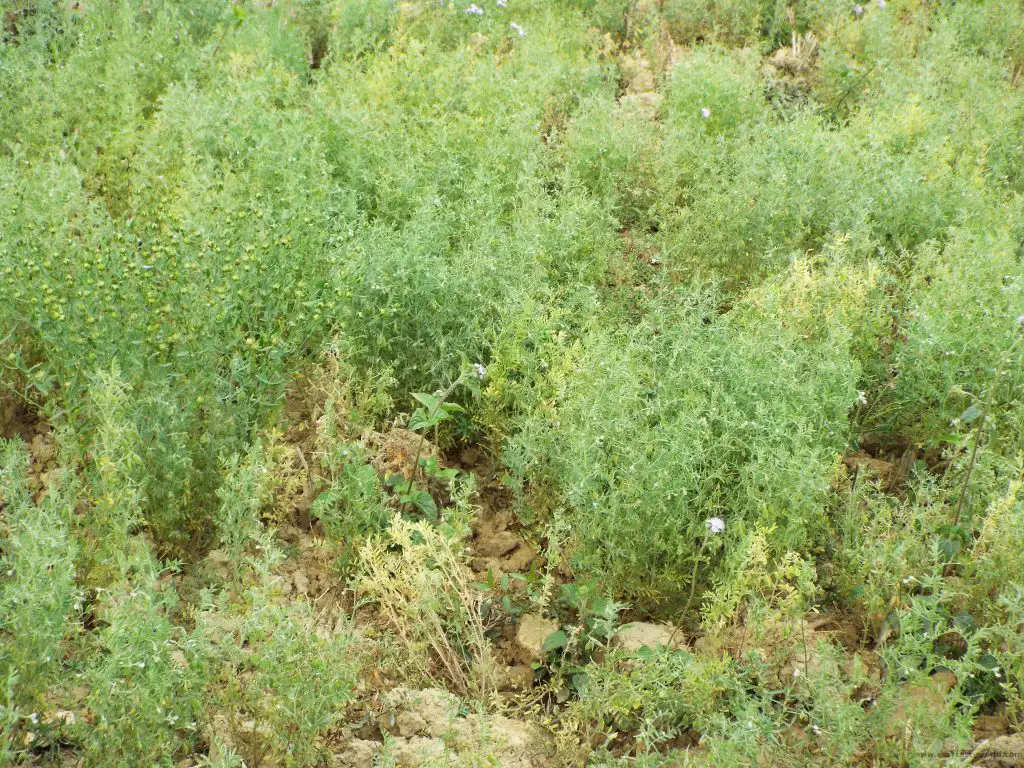
Then we started preparing the vegetarian dish that accompanied the rice which was boiling away merrily on the fire. Beans were sliced using a knife by steadying the handle with a foot and – carefully – slicing the beans using the inside of the blade. Other vegetables were added.
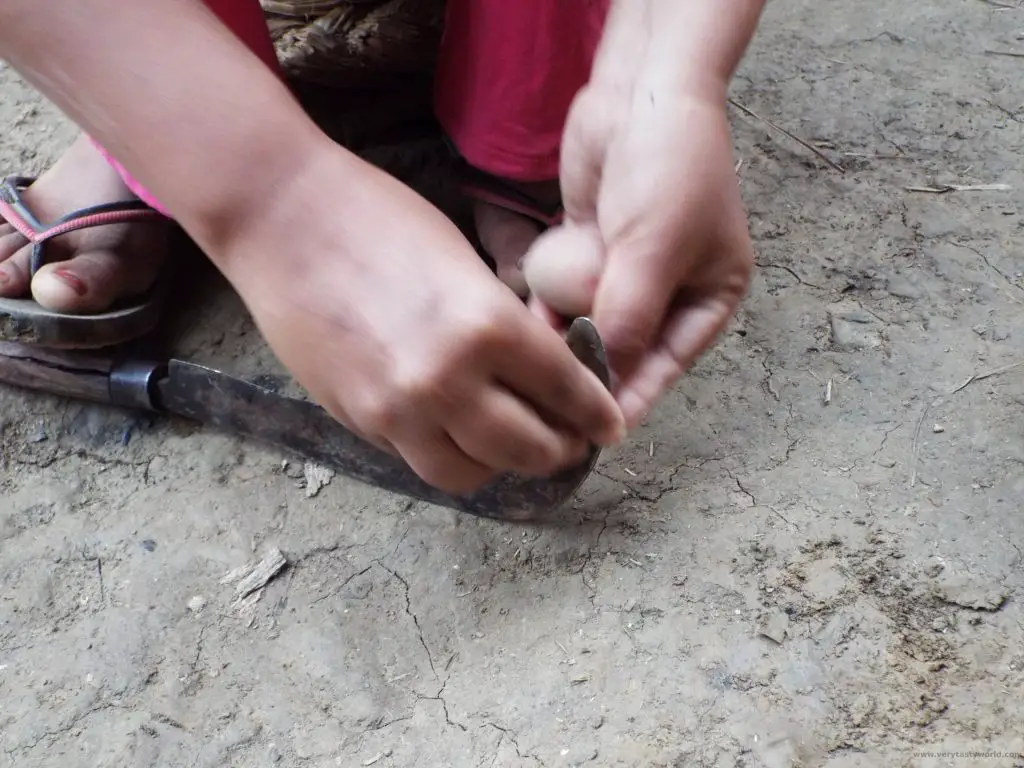
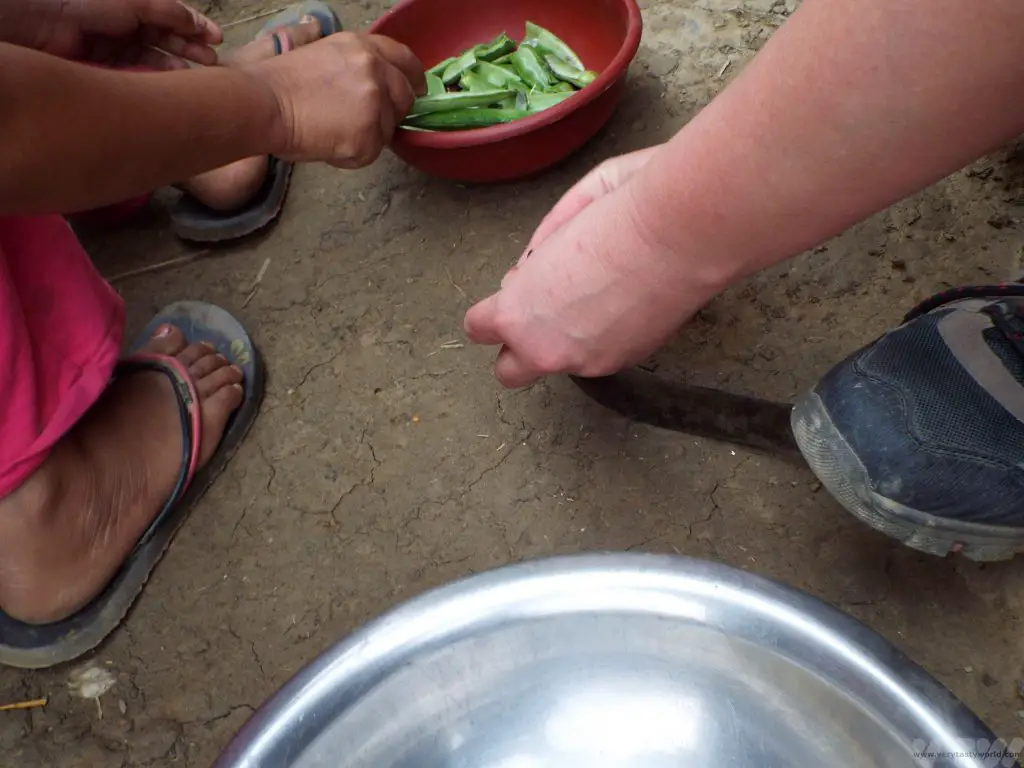
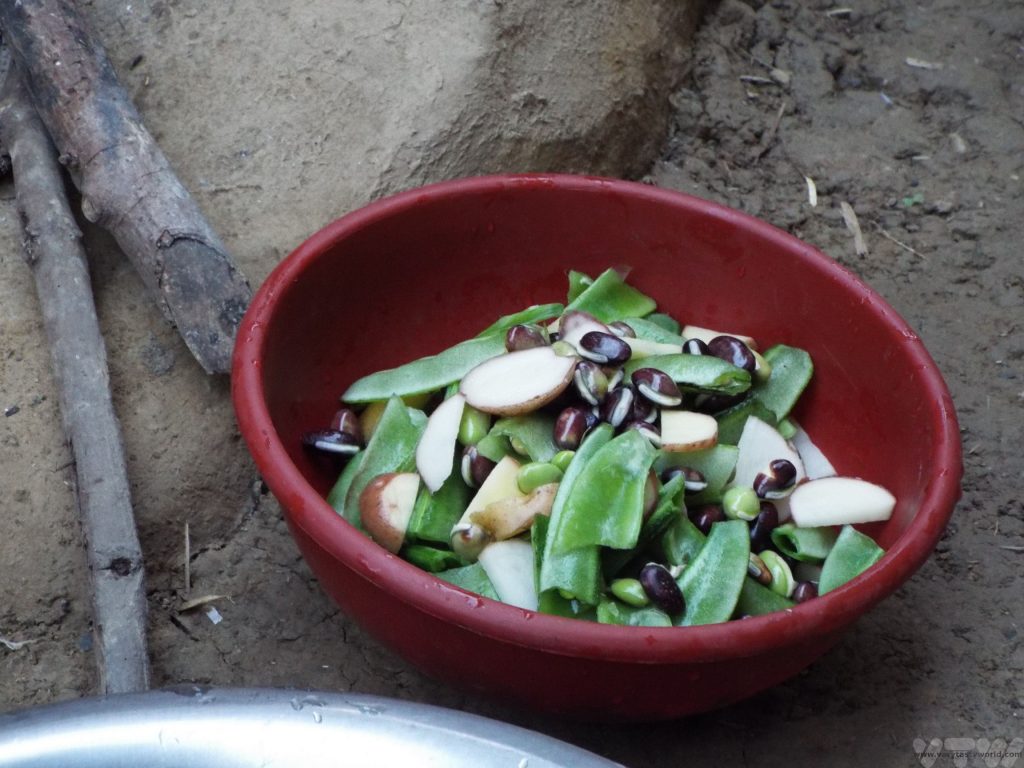
We then went onto flavouring and this was something of a revelation. At home we’re very accustomed to using gadgets to process our food. There’s nothing wrong with that – with busy lives, a food processor can save a few seconds with all sorts of routine kitchen preparation jobs. But, actually, crushing garlic with a stone on a rock took no time at all and produced a smoother paste than any garlic crusher we’ve come across.
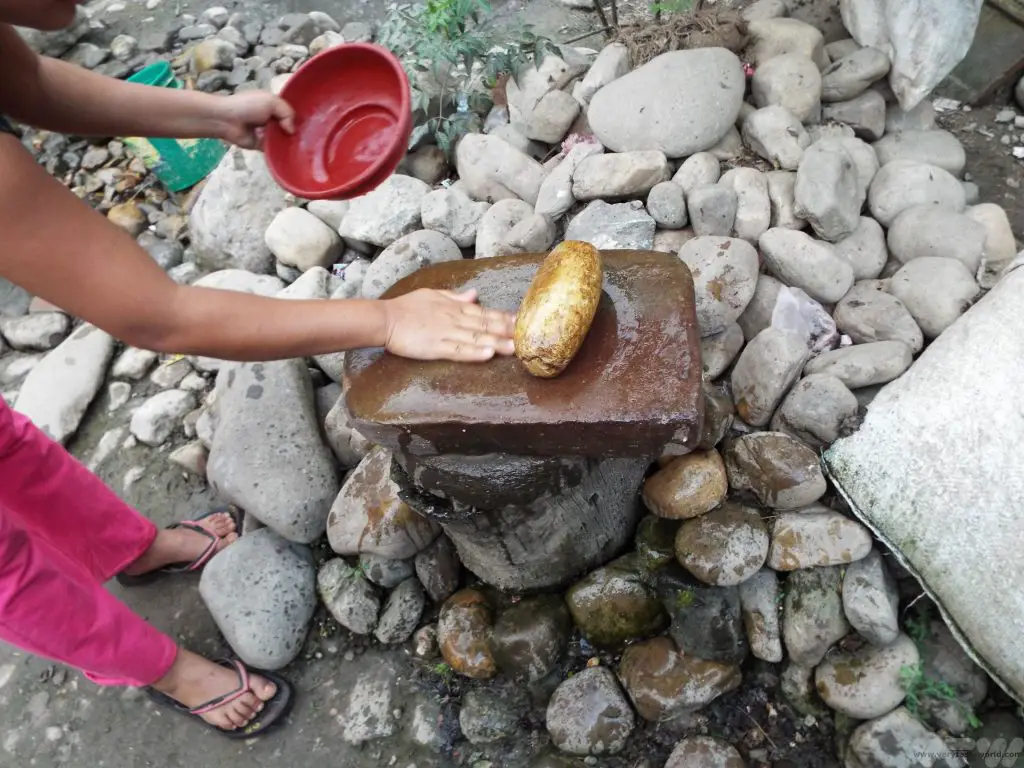
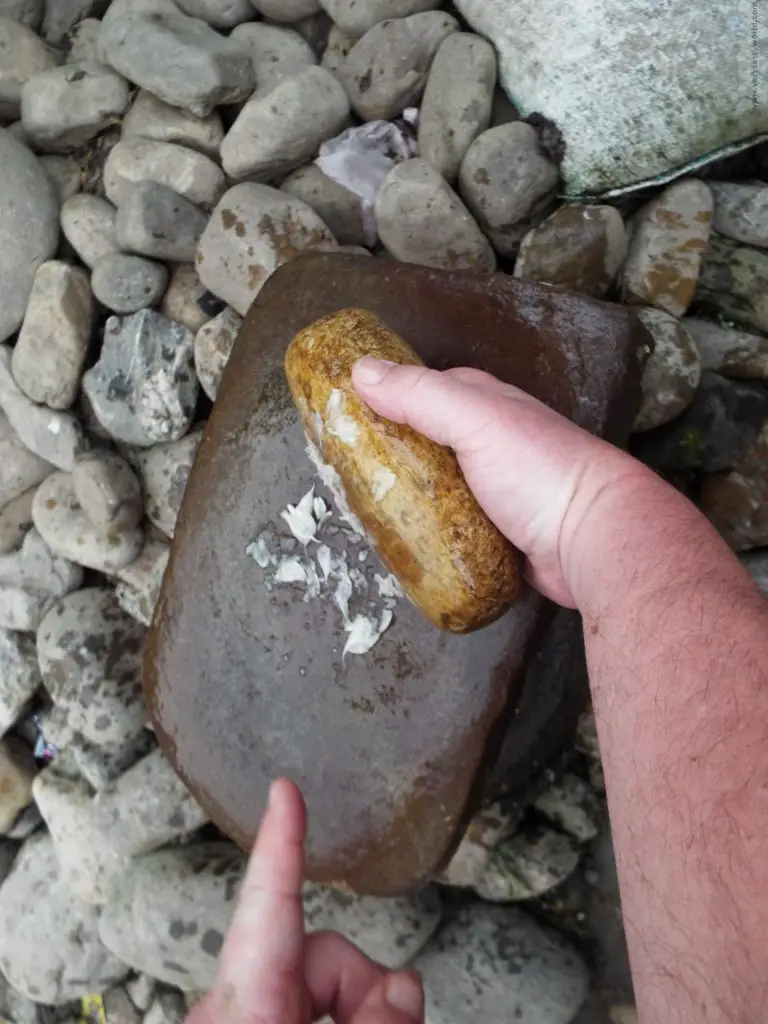
We removed the rice, which remained piping hot inside its pot and cooked the main dish over the fire. We started by quickly frying off the garlic and then added the vegetables and a bit of water to simmer.
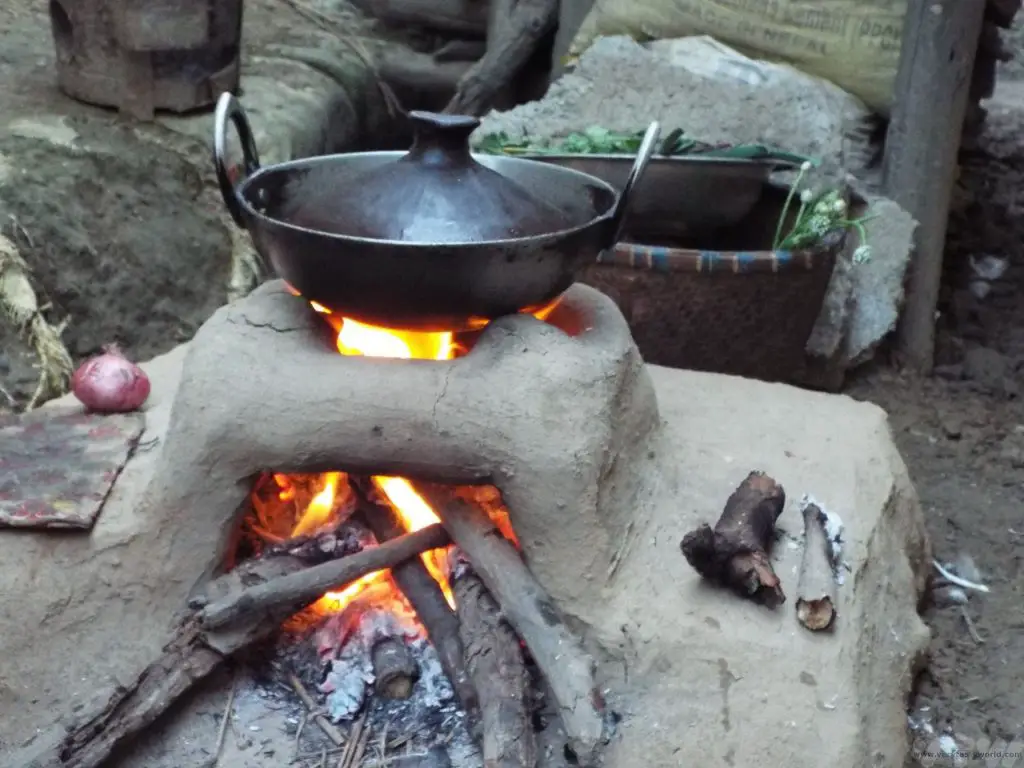
The other thing is that we are also very used to buying powdered spice mixes. Pick up a packet of garam masala, sprinkle into your cooking and… instant flavouring. But so many of us buy spice mixes that are often never fully used before their ‘best before’ dates and languish in a cupboard slowing turning into tasteless dust. And it really isn’t that much more effort grind whole spices. Again, we used a stone. In this instance some dalchini (cinnamon bark), a few peppercorns, a dried cinnamon leaf and a cardamon pod were quickly ground into a masala. And doing it this way also gave us the freedom to change the spice combination. We added this to the dish at the last moment to provide a very aromatic flavour. Which, of course, was delicious.
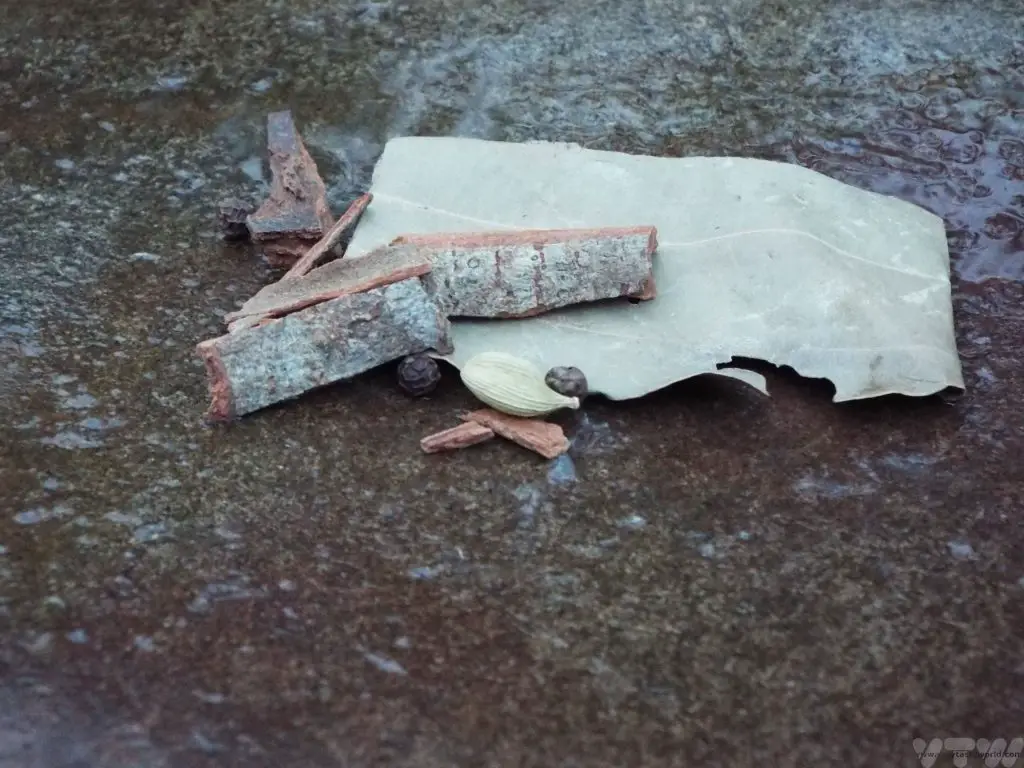
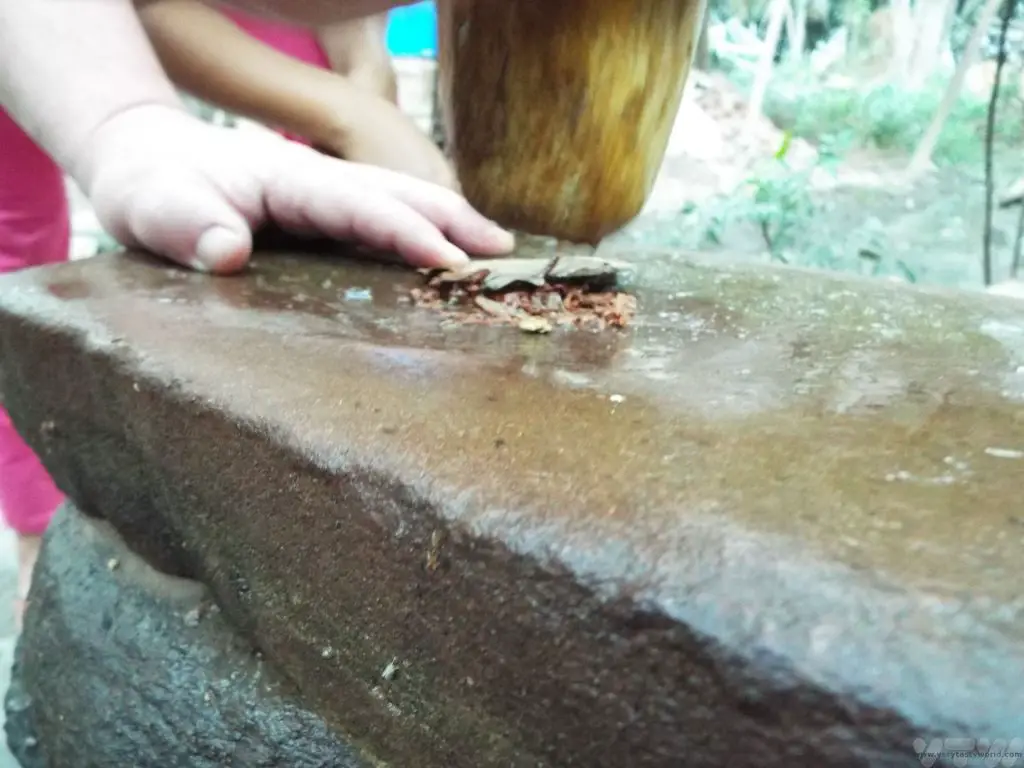
We shared it with our host family in their home.
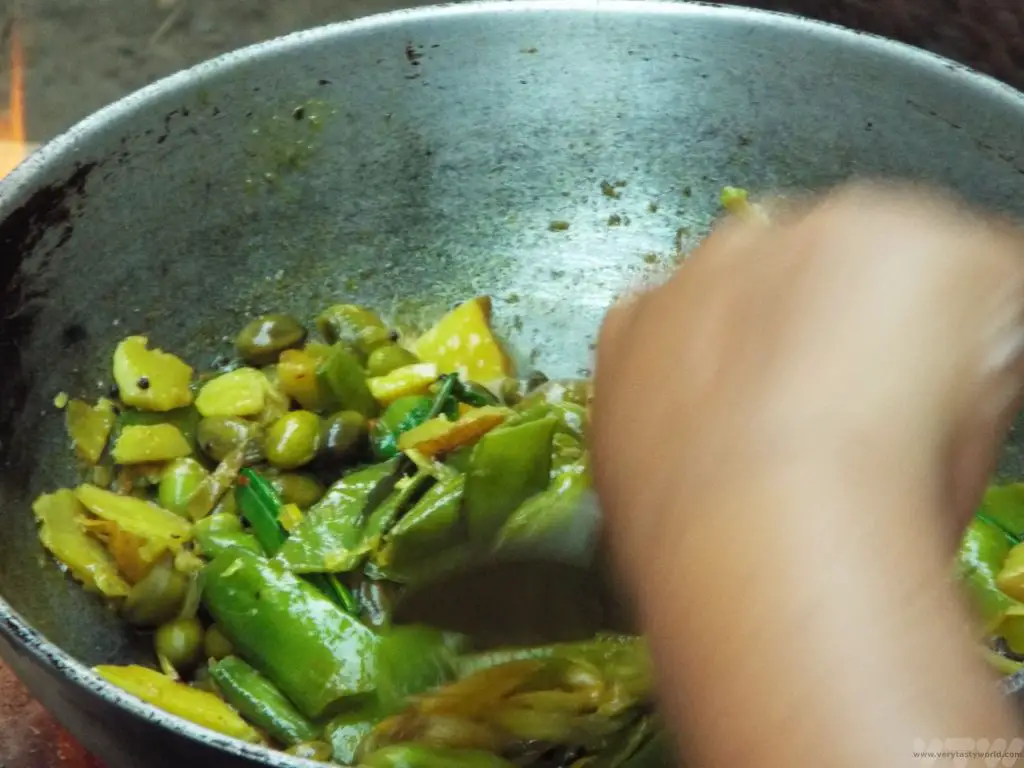
The trip also included an opportunity for Mitch to dress up and dance with the local ladies. Photos of her wearing traditional dress and – shock, horror – make-up do exist, but we’ll spare you those. What was great about the trip was not only getting the opportunity to cook and taste delicious local food but also to meet so many lovely people. Our hosts were absolutely charming and the whole village was delighted to see us.
The afternoon with the Tharu was delightful but it also changed the way we think about using spices. After our visit we decided that we would buy whole spices and then we could develop our own flavourings. Much as we’d like to have a grinding stone and a rock it’s not very practical in a suburban English house, but we do use a good quality granite pestle and mortar. It gives us the opportunity to experiment with spice combinations as well as textures – sometime we want a fine grind, other times we prefer a coarser texture. The whole spices can be stored more easily and keep for a longer period of time – especially if using an airtight container.
Related Posts You May Enjoy

World’s Best Breakfasts -Breakfast of Champions!
….And Why It’s Often Okay to Go Off-Menu When Travelling
Many years ago we were excitedly choosing all sorts of delicacies at the breakfast buffet at our hotel in Yerevan, Armenia, when another guest glanced at our plates, shrivelled their noses in a very patronising manner and exclaimed, “Ugh! Salad? For breakfast?” It’s widely considered to be most important meal of the day but so many people seem to be set in their ways when it comes to eating a hearty breakfast. So much that hotels all over the world seem to offer pretty much the same fare. Western visitors are often offered fried food such as bacon, sausage and eggs with bread-based accompaniments and Eastern visitors are usually offered rice or noodle dishes. All these dishes are generally familiar to the tourist and often don’t reflect the traditional breakfasts of the country they are visiting. Here are some of the world’s best breakfasts.
Maybe it’s because people don’t feel so adventurous first thing in the morning, and that’s fair enough, but they may be missing out. Thing is, we’re British and can have bacon and eggs any time we like. (Although, to be honest, we haven’t cooked a fry-up for years as it’s quite a lot of effort.) We’d much rather eat a typical breakfast using local ingredients from the country that we are visiting.
It’s quite common for hotels to ask their guests to pre-order breakfast. It makes sense, they know what they need to order in beforehand and this can help minimise food waste. There is usually a form with tick boxes and you can choose from a variety of typical breakfast offerings. But if you do want to eat like a local, we’ve learned that many hotel restaurants are happy to cook you a regional breakfast. We’ve discovered that very often it’s absolutely okay to go off menu.
It all started in Uganda when we breakfasted at a lodge with a local guide. We were eating standard fare but our curiosity was piqued when something entirely different was brought out for him. On asking, we learned that it was a rolex – a chapati with a layer of omelette on top, then rolled into a spiral cylinder, perfect for munching on. So the next day we asked the lodge staff if it would be possible for us to have a rolex for brekkie and they were happy to oblige. It’s great – tasty and filling – a good start to the day.
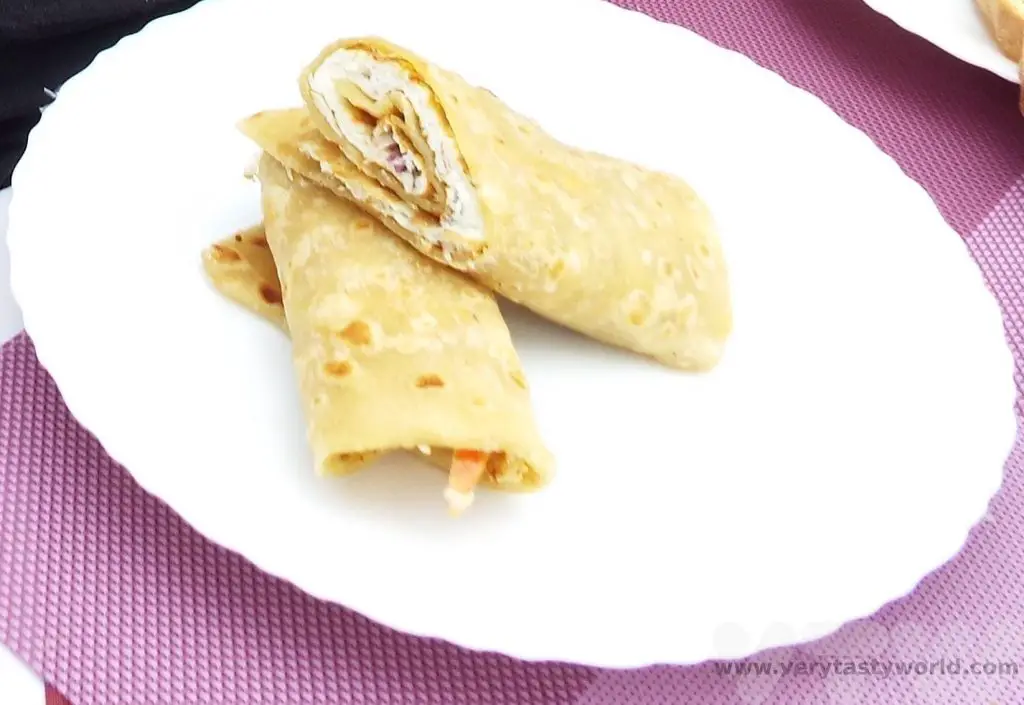
In Nepal we were given a standard pre-order form to complete (eggs, bacon, sausage, toast…) to pre-order breakfast for the following morning. We politely asked whether it was possible to have a local breakfast instead. We didn’t specify any dish – just asked for local food. They were delighted. The following morning we were served a marsala omelette accompanied by a joyous curry and roti with home-made yoghurt. It was delicious.
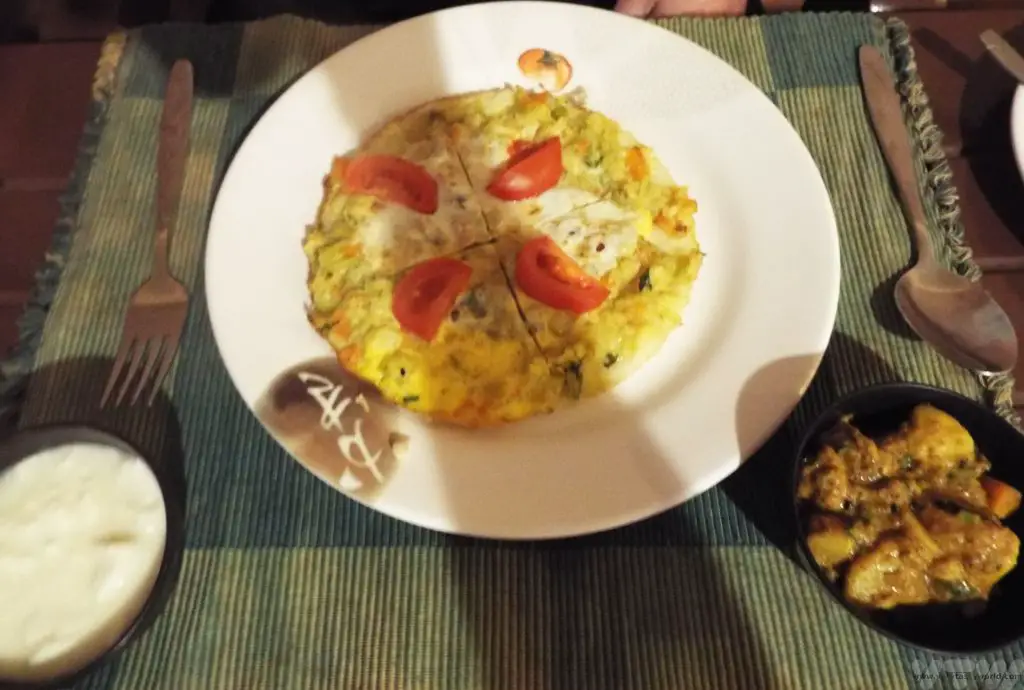
One of the world’s best breakfasts is gallo pinto from Costa Rica. It’s so popular it is often eaten for lunch and dinner as well. Which is just as well because it tastes great and is also really healthy. It comprises rice and beans and is usually accompanied by a fried egg at breakfast. Other accompaniments to start the morning include sausage, fried potatoes and some salad.
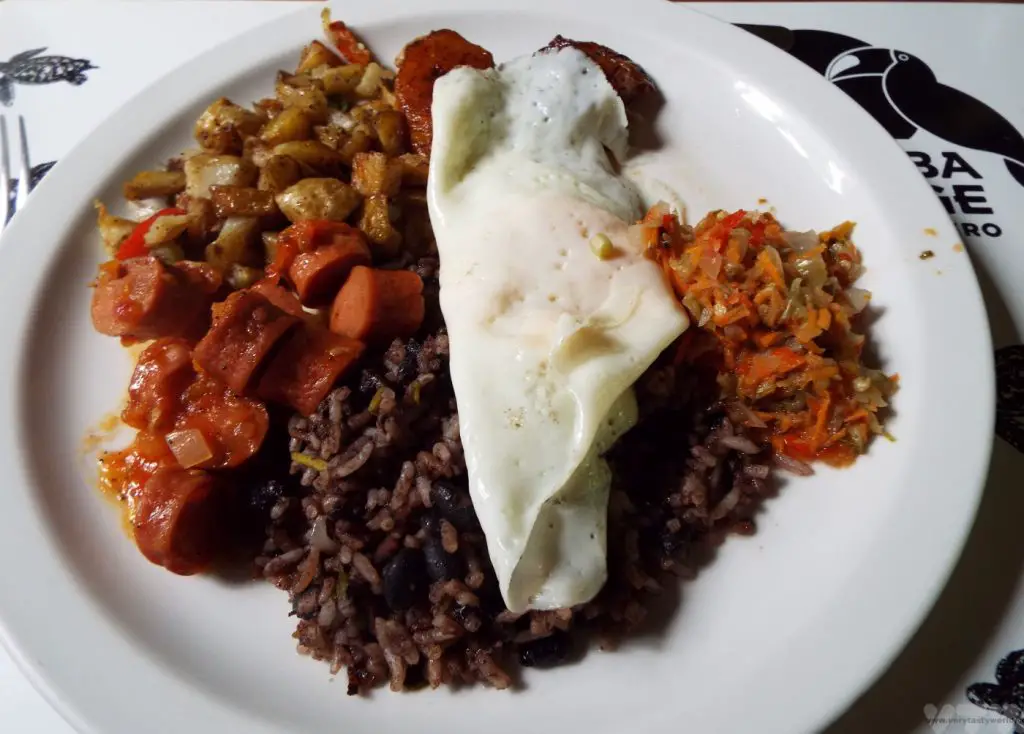
A dosa for breakfast in South India is an absolute joy. This is a pancake traditionally made from rice and dal (lentils) which are ground to form a batter and then fermented. The batter is cooked on a hot plate to form a large pancake and served with chutney – coriander, coconut and tomato are particularly popular.
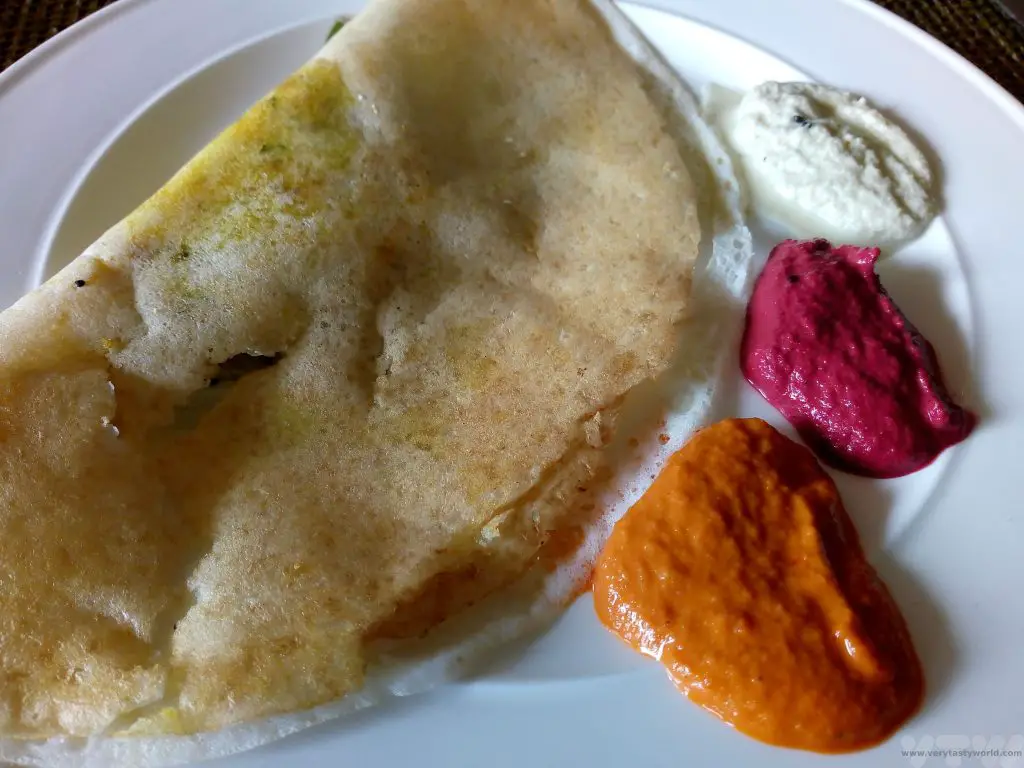
In Vietnam breakfast usually took a buffet form but often there were chefs on-hand to cook some food to order. We were always offered Pho – a tangle of noodles, freshly cooked and served in a yummy broth, topped with meat and vegetables. You pick up a side plate and add herbs, chilli, limes and other delicious items so that you can create your own personalised taste sensation. The liquid of the broth also ensured that we were thoroughly hydrated for the day ahead.
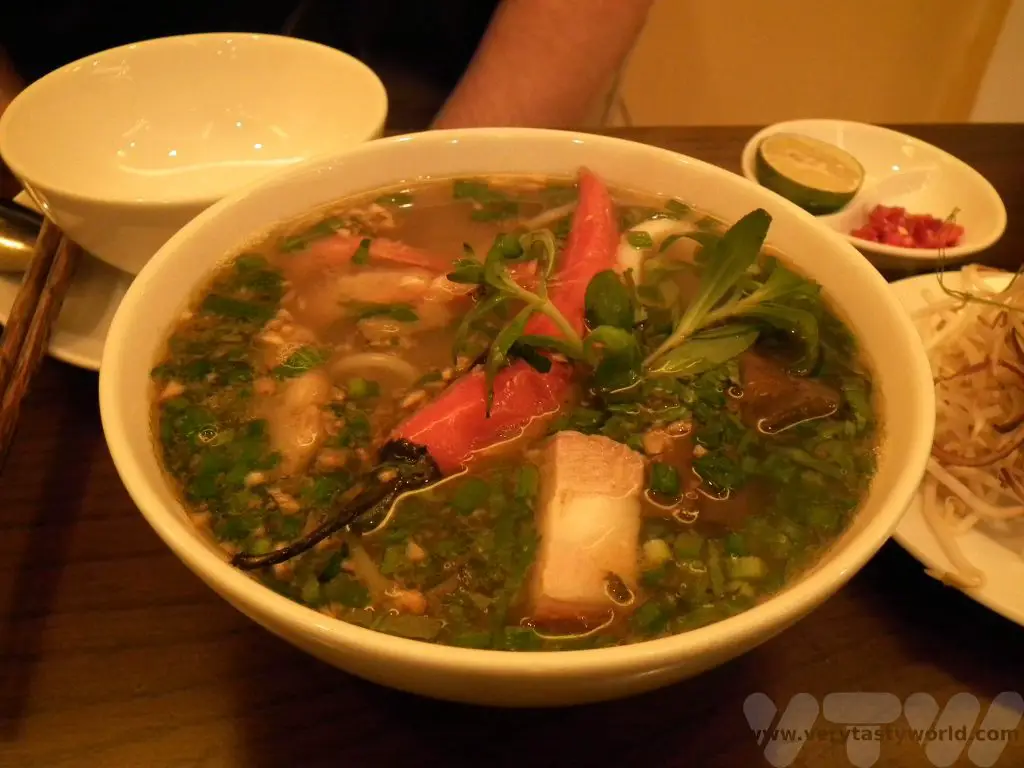
Japan also offers some of the world’s best breakfasts. A Japanese brekkie often comprises grilled fish, vegetables and pickles, maybe with tofu, dumpling and an omelette.
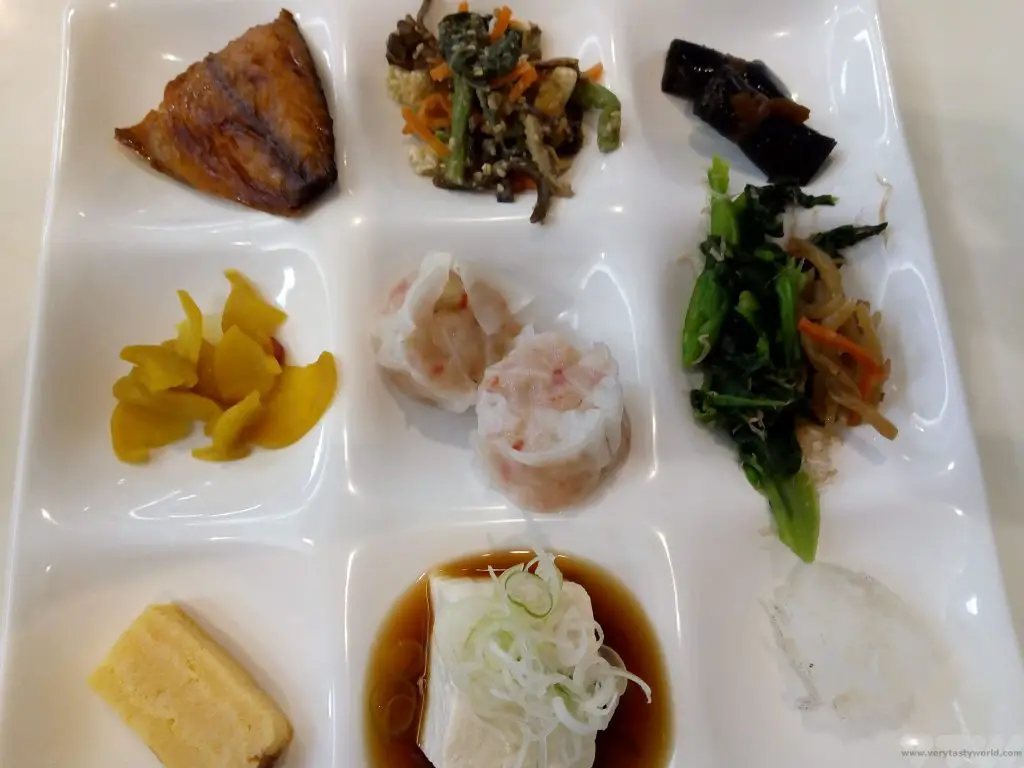
These are accompanied with a bowl of rice, into which you could crack a raw egg mixed with shoyu (soy sauce) – the egg sort of cooks in the heat of the rice – or that famous smelly fermented soybean concoction, natto, maybe with some sliced negi (similar to spring onion). Just grab a slice of nori (dried seaweed), place it over the rice, then using a pincer movement with your chopsticks grab a portion of rice with the nori. Scrumptious. (It’s worth noting that if you are at a breakfast buffet in Japan the eggs on offer may well be raw – be careful when cracking them.)
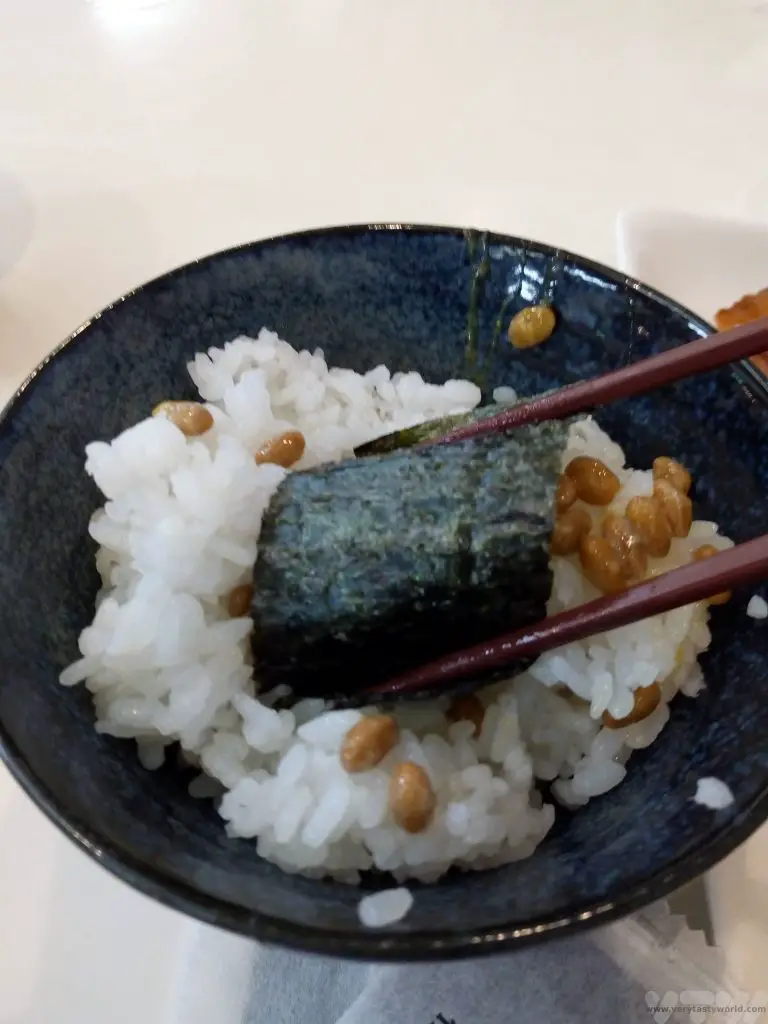
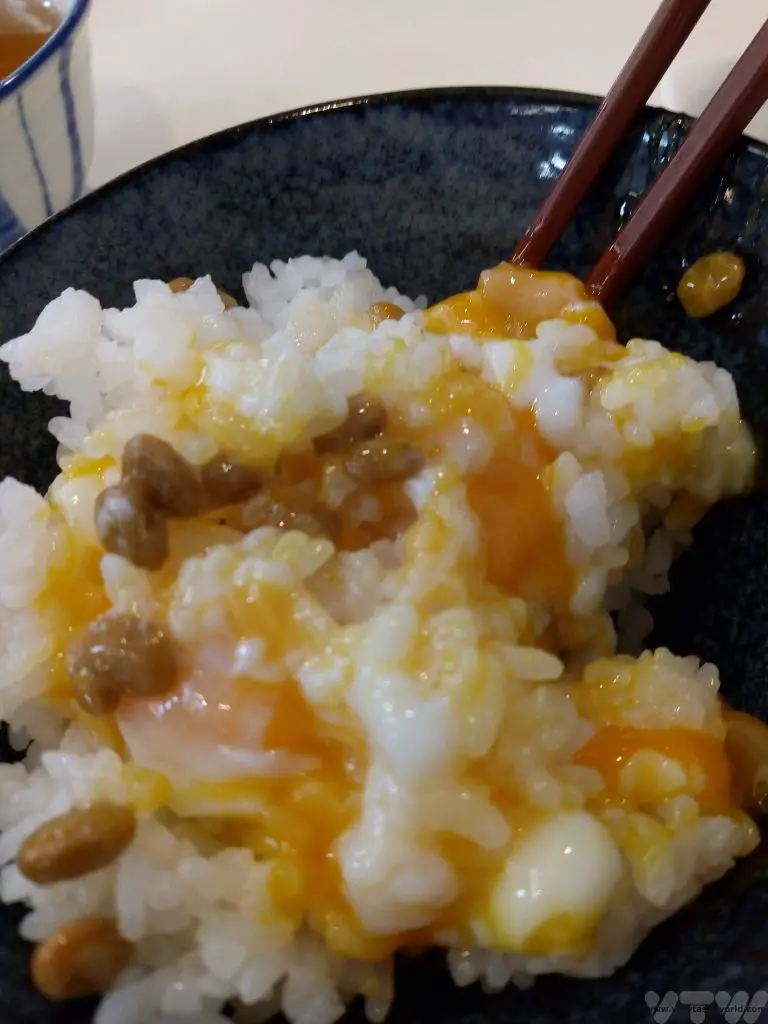
World’s Best Breakfasts – Back At Home
And, of course, whenever we are staying away from home in the UK, we’ll always have an honest-to-goodness fry-up. Sausage, bacon, egg (usually fried, poached or scrambled), black pudding, mushroom, tomato, beans and sometime a hash brown are the usual components.
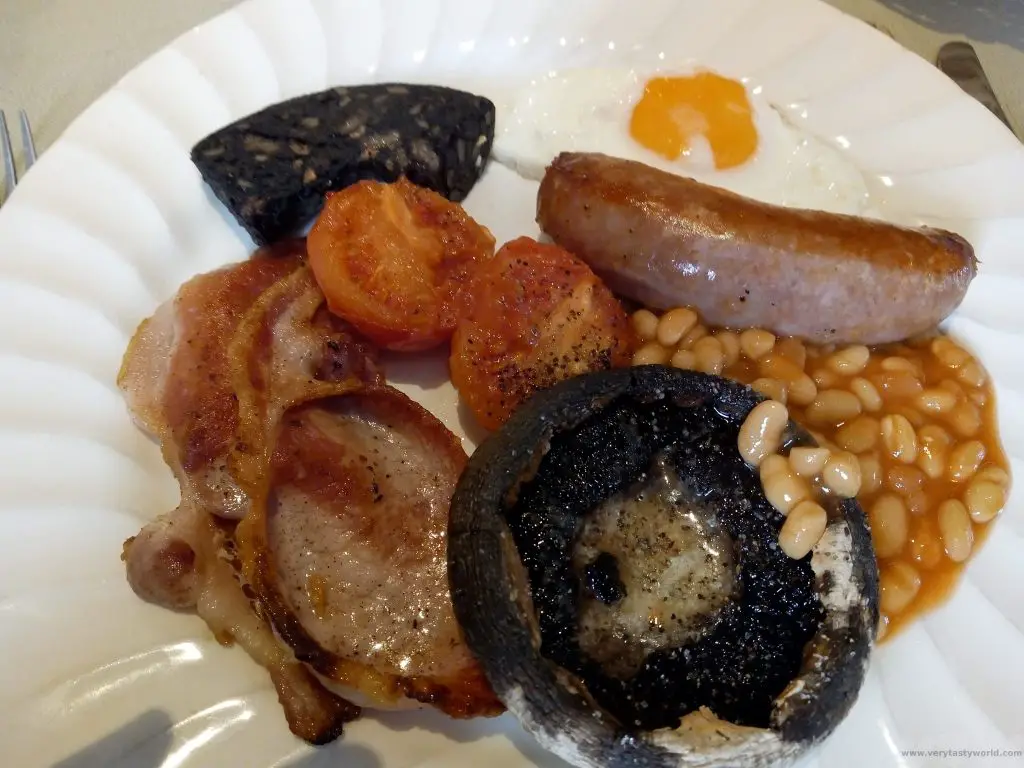
We recently discovered that the best possible place for a full English breakfast that we’ve ever eaten is actually in our home town. While many top breakfast establishments boast locally sourced food (which is, of course, delicious), The Gourmet Food Kitchen in Fargo Village, Coventry go one step further and actually cure their own bacon and make their own sausages and black pudding. And that’s just the start: The hash brown (never the most fabulous component of breakfasts) is a home-made bubble and squeak, a glorious blend of fried potato and cabbage. The beans have never seen a tin – they are home-made baked beans in a rich tomato sauce. Chef Tony even makes his own rich, tangy and utterly delicious brown sauce to accompany the feast.
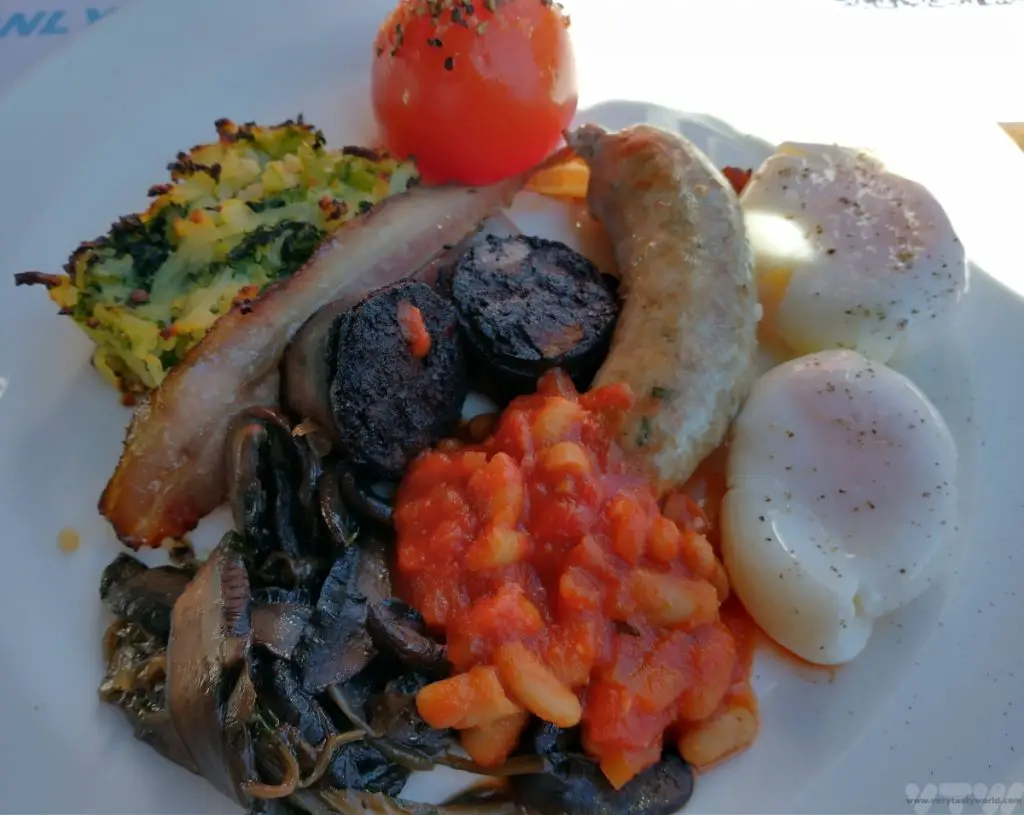
Related Posts You May Enjoy

Nepal Momo FOMO
It is possible to stay in Buddhist monasteries when visiting Nepal. The Neydo Monastery is located about half an hour’s drive from Kathmandu (once you manage to leave Kathmandu – the traffic can be incredibly busy). It offers simple accommodation which is basic but clean as well as an evening meal and breakfast. If you get up early enough you are welcome to watch the monks’ daily worship as they chant from religious texts accompanied by a variety of instruments. Just enter the temple quietly and sit on one of the mats provided at the back of the room. Naturally no photos are permitted inside the monastery’s prayer hall.
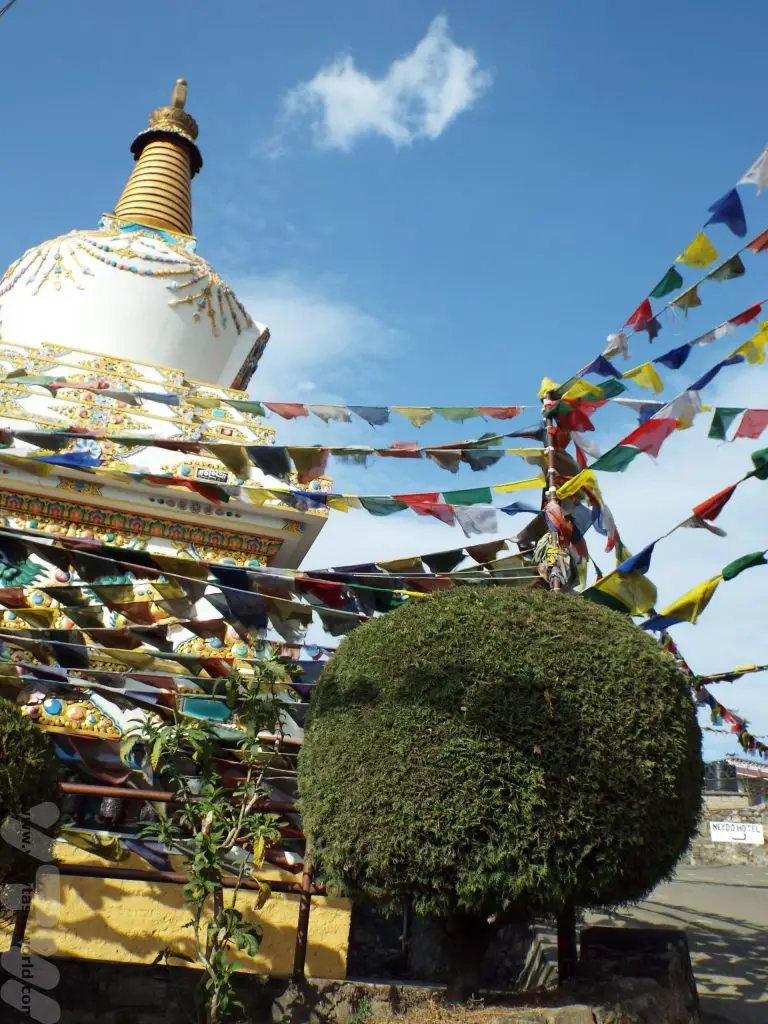
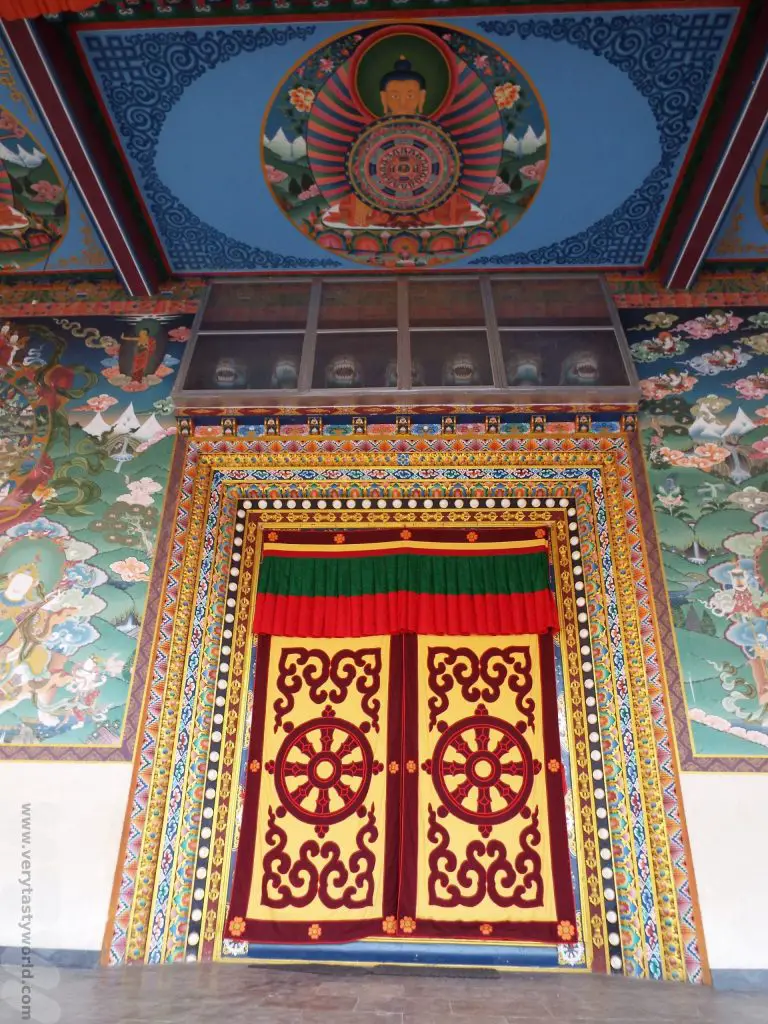
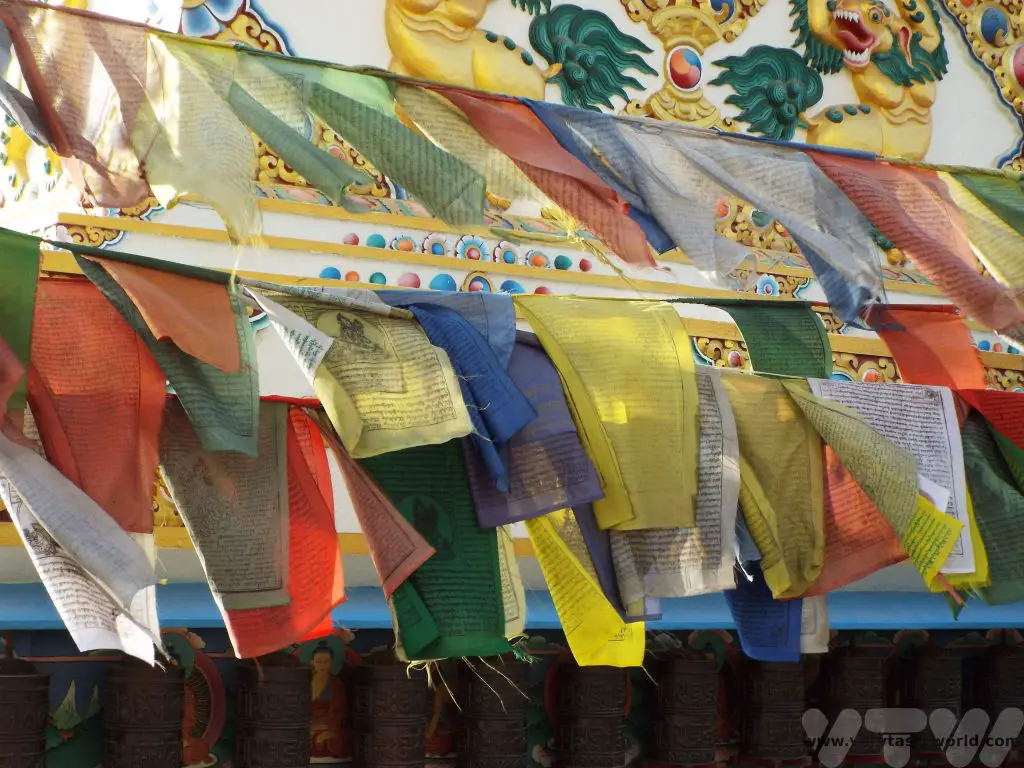
Dinner – Nepal Momo
The evening meal on offer was momos, which are delightfully delicious dumplings, basically a flour and water dough filled with meat, vegetables or cheese. They are usually steamed, often over a bowl of flavourful stock, but can also be pan fried or even deep fried. They are often accompanied by a dipping sauce, something akin to a chutney.
These were vegetable momos with a mild savoury dipping sauce accompanied by a light soup.
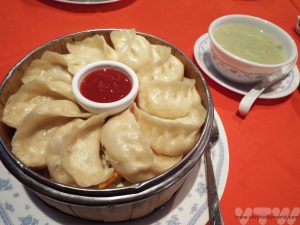
Nepal momos are so popular that you will even see fast food dumpling outlets, especially in Kathmandu. These often offer set meals – you can order via a picture menu just as you would at a burger bar. During our trip to Nepal we had eaten plateful upon plateful of the delicious little darlings, but it was on our last day – in one of these restaurants – that we realised that we had been eating them all wrong! Maybe it’s because we’re British, we were trying politely to take a delicate bite of a momo each time we ate one. However, a friendly local, who kindly hid his appalled expression when he saw us daintily eating momos, explained that you should always eat them whole.
The reason? As the momos steam the juices from the filling create a little soup inside the dumpling shell. Bite into part of the momo and the soup drains out – lost forever. Eat the whole momo and the flavour of the broth fills your mouth with soupy deliciousness.
Just make sure the momos have cooled down a little before scoffing.
